|
New Jersey is the nation’s most densely populated state. And somehow, it’s a state teeming with small towns — New Jersey’s least-publicized asset. Which make for the perfect spring road trip, especially at a time when we want and need to get out of the house and get some fresh air. There’s no better time for a weekend getaway than now — good weather, less crowds, little traffic. The small towns on this list are not necessarily there because they are super shopping and eating destinations. They’re just great places to escape the rat race (or whatever it is you’re running away from). Perfect for (socially distanced) day trips or weekend getaways, these towns are packed with history, tradition, charm and congeniality. Definitions of “small town” vary — all my towns, with one exception, have populations under 15,000. So you won’t see such worthy places as Westfield, Cranford and Ridgewood on this list. Some of these towns, such as Ocean Grove and Crosswicks, are sections of municipalities. This is an expansion of a list I first did in 2015, when I picked 10 towns, and 2017, when I picked 25 towns. Quite a few towns on the 2017 list moved up, moved down or fell off the list. This, after all, is a ranking, and thus subject to re-evaluation. Again, this is not a ranking of the best downtowns, but the best small towns to live in. All the towns here have one thing in common: I could move into any of them tomorrow.
32. StillwaterStillwater Township, population 4,200, comprises three villages: Middleville, Swartswood and Stillwater, the latter the home of the Stillwater General Store. George Dallas Garris used his mustering-out pay from the Civil War to open the store in 1871, across the street from where it sits today. The store’s latest owner, Dean Voris, has renovated the building, which will now be called the Geo. D. Garris General Store. The store and village are an evocative slice of rural Americana in the nation’s most densely populated state. And New Jersey is rich with general stores. 31. Island Heights It’s the Jersey Shore town many have never heard of, much less visited. Minutes from frenetic Seaside Heights and tucked along the Toms River almost as an afterthought, Island Heights was formed — like Ocean Grove — as a religious camp meeting/summer resort in the late 1800s. The Pennsylvania Railroad once ran through town, but today the loudest noise you’ll hear is probably your own breathing. There’s no public beach, no boardwalk, no rides, just peace and quiet. Must-stops: the Corner Deli, Playa Bowls and the Cottage Museum. 30. Atlantic HighlandsBayfront setting. Vibrant restaurant and cafe scene. One of the state’s best breweries (Carton). Ferry to New York City. What more could you want? Atlantic Highlands, not to be confused with next-door-neighbor Highlands, is an architectural treasure house, with Victorian, Queen Anne and Colonial Revival homes. Take a guided walk starting at the Strauss Mansion through the Atlantic Highlands Historical Society. Must-stop: Mount Mitchill, the highest natural elevation on the Atlantic Seaboard.
27. Maywood Maywood claims the best shopping district in Bergen County, and “a small town feel that you just can’t find anywhere else” in the state’s most populous county. I won’t disagree. Pleasant Avenue is home to several personal favorites — Uncle Paulie’s, a Peruvian restaurant, and Seafood Gourmet. Maywood was incorporated as a borough on June 30, 1894 at the height of the Boroughitis phenomenon then sweeping through Bergen County and the United States.
25. Hammonton This Atlantic County town is slowly getting on the tourist radar, with a diverse mix of restaurants — pizzerias, Mexican restaurants, wine bar and cafes. Penza’s Pies at The Red Barn makes delicious, fruit-loaded pies. Pick your own blueberries at DeMeo Farms or Blueberry Bill Farms. Hammonton is, after all, “the blueberry capital of the world.” 24. Sparta Sparta, formed in 1845 from portions of Byram, Hardyston, Frankford and since-defunct Newton Township, is known for its private lake communities — 11 in all. Man-made Lake Mohawk, with its meandering boardwalk and Alpine-style buildings, is a big draw. Sussex County’s best bakery, Cafe Pierrot, can be found in Sparta, along with Andre’s Lakeside Dining, Krogh’s Restaurant & Brew Pub, Tanti Baci and the Mohawk House.
21. Belvidere Quick, name the Warren County seat. No, not Phillipsburg. Nope, not Hackettstown. Tiny Belvidere, where the Delaware and Pequest rivers meet. Incorporated in 1845, Belvidere boasts a 19th century historic district, alone worth the visit. Thisilldous Eatery, open nearly 40 years, is a locals hangout. Departing staff get the traditional pie-in-the-face. The highlight of the town’s social calendar: Victorian Days, normally held in early September. 20. Collingswood The Camden County town has become a popular destination in recent years, and you can thank the Mob — in part, anyway. Angelo Lutz, former Merlino family associate, runs the Kitchen Consigliere, an Italian restaurant in the center of town. The commercial strip is the longest of any town on this list, with a heady mix of hip and old-school shops, stores and restaurants. Try the excellent Italian fare at Zeppoli. Sample the 50 kinds of olive oil at Blue Moon or dig the retro cool at The Pop Shop. The Painted Cottage, down an alley, specializes in vintage painted furniture. The fabulous Scottish Rite Auditorium is also in town.
18. Walpack Center No one lives in Walpack Center (about 10 people live in Walpack Township, of which it is part), but that’s exactly its charm. It’s the prettiest town no one lives in that you’ll ever visit, a haunting reminder of the ill-fated Tocks Island project, when the government spent $100 million to buy homes in the area, evicting 8,000 people, for a dam that was never built. The National Park Service now owns all the buildings in Walpack Center except the school, which serves as town hall. The only building open on a regular basis (although not currently due to COVID-19) is the local museum. Two miles away is beautiful Buttermilk Falls. The town that time forgot is well worth a visit any time of year. 17. Pitman Pitman, like Ocean Grove, was founded as a summer religious camp. It was named after the Rev. Charles Pitman. The community, according to Barbara Westergaard in the indispensable New Jersey A Guide to the State, was laid out in the shape of a wheel, with an auditorium as the hub, and 160 small cottages radiating from the center. Today, Pitman is a lively little town, with Broadway the main drag and the Broadway Theatre, built in the early 1920s, a retro wonder. There are two craft breweries (Kelly Green and Human Village), a first-rate ice cream shop (Alaura Kitchen); an excellent pizzeria (Mannino’s); Nine Thai, replacing Thai Burger Cafe; and a creme puff shop (Chloe’s Creme Puffs).
10. Crosswicks Crosswicks claims to be the birthplace of Taylor pork roll — John Taylor, a descendant of Crosswicks settlers, made his soon-to-be-famous ham for a local market — but that’s not why it’s on this list. The village, part of Chesterfield Township, is a charming step back in time, with 100 or so historic houses and buildings. Check out the cannonball, fired during a battle with Hessian troops in 1778, still embedded in the wall of the Crosswicks Friends Meeting. The town library is in the former fire department, and the Crosswicks Inn, which opened as a tavern in 1681, is now a pizzeria (and a good one, Osteria Procaccini). 9. West Cape May No, not Cape May, but sleepy West Cape May, where 1,020 people live at the end of Jersey. Drive down Sunset Boulevard, past the Chattel House Village series of shops (Exit Zero Magazine, The Bird House), past the Nature Conservancy’s South Cape Meadows (weekly guided bird walks) to Sunset Beach in Lower, home of an evening flag-lowering ceremony and the state’s spookiest attraction — the concrete ship Atlantus, which sank in 1926. Just down the road, also in Lower: The Bread Lady — Elizabeth Degener — and her Enfin Farms roadside stand on Sunset Boulevard. One more stop: Willow Creek Winery.
4. Cranbury Cranbury, one of the state’s best-preserved 19th century villages, scarcely seems to have changed, with its tree-lined Main Street and well-maintained homes. Teddy’s Restaurant, open since 1973, is where the locals eat, and a cone at Gil & Bert’s Ice Cream (re-opens April 9) is a summer night tradition. One other thing to love about this town: no parking meters.
This article originally appeared on NJ.com. written & contributed By Peter Genovese
0 Comments
It isn’t hard to find fun in New Jersey. Most of the time, fun just happens to find me. There’s always something going on here, someplace new to see. If you’re seeking adventure, you’re in the right state. Best of all, you can travel almost anywhere within a day. Here are some of the best day trips you can take in the Garden State. You may be familiar with several of these places but I’m sure you’ll discover something new next time you’re searching for day trips near me in New Jersey. 1. Lakota Wolf Preserve - 89 Mount Pleasant Road, Columbia This incredible non-profit organization helps care for wolves born in captivity along with foxes and bobcats. This preserve is the largest of its kind in the Northeastern United States and it is open to the public for tours. Educational tours are available twice per day, except on Mondays, and you must arrive early to register. Learn all about the way these wolves live and witness them up close for 60-75 minutes. Private photography tours are also available. Read more about it right here. 2. Grounds For Sculpture - 80 Sculptors Way, Hamilton If you enjoy art, nature and good food, Grounds For Sculpture has got it all. You'll find stunning sculptures scattered throughout the 42-acre grounds, along with gorgeous landscaping that changes with the seasons and a gourmet eatery - Rat's Restaurant. The restaurant is designed to look like a Claude Monet painting and is truly a work of art. You'll find hidden surprises tucked in nearly every corner of the park, including elevated viewpoints and air-conditioned areas to relax. My favorite thing to do here? Get lost. You may just spot a peacock while trying to find your way. Read more about it right here. 3. Cape May While this seaside resort is perfect for a weekend getaway, it also makes for a great day trip. Start with breakfast at The Mad Batter, shop the Washington Street Mall, take a trolley tour to suit your interests (ghosts, history, nature...) and end the day at Sunset Beach. Snap some photos of the SS Atlantus while you can; one day, it will be entirely engulfed by the ocean. Read more about it right here. 4. Liberty State Park - 200 Morris Pesin Drive, Jersey City This urban oasis has a lot to offer. While being a departure point for cruises to Ellis Island and the Statue of Liberty may be the biggest draw, you'll also find the Liberty Science Center on the grounds, kayak eco-tours, a restored railroad terminal, opportunities for fishing and picnicking and bike rentals. But this isn't all! Don't miss the magnificent Liberty House and Maritime Parc Restaurants. If casual dining is more your scene, check out Baozi Brew, a beer garden and dim sum spot offering summer movies. Visit on May 28th for Fleet Week activities including military drills and demonstrations along with children's activities. Read more about it right here 5. Ziplining at Mountain Creek - 200 NJ 94, Vernon Township There's plenty to do at Mountain Creek, but the zipline tours are out of this world. Enjoy scenic views from the sky as you zip over the water and through the woods. Enjoy the mountain in a whole new way, all while safely strapped in to your harness. Read more about it right here. 6. Wildwood Is it really summer if you haven't spent a day at Morey's Piers? The beachfront amusement park opens for the season on May 25th and offers a wide variety of arcade games, family attractions and thrill rides. You'll also find waterparks and classic boardwalk grub along this 6-block adventure paradise. Be sure to try breakfast in the sky - a truly unique experience. Read more about it right here. 7. Clinton While the historic Red Mill is Clinton's most iconic attraction and should definitely be part of your day trip, don't forget to stop by the Hunterdon Art Museum. Located right across the river, current exhibits include The Art of Construction and a Young Artists Showcase. Don't miss Art on Tap (June 4th), an annual beer and food tasting fundraiser. Before the day is done, take a stroll downtown. Read more about it right here. 8. Morristown The ultimate New Jersey day trip destination for history buffs, this entire town could easily have the slogan, "Washington was here." His winter headquarters can be found at the Ford Mansion while his troops stayed in Jockey Hollow. Other popular attractions include Fort Nonsense and the Frelinghuysen Arboretum. Read more about it right here. 9. Haddonfield This charming smaller town is a major shopping and dining destination. Don't miss the British Chip Shop (restaurant) and the English Gardner (gift shop) for a little slice of the UK. When you've perused as many shops as you can, stop by the Indian Tavern Museum (open Wednesday-Sunday) for a dose of local history. Read more about it right here. 10. The Tuckerton Seaport - 120 Main Street, Tuckerton An immersive experience, The Tuckerton Seaport and Baymen's Musuem brings to life the Jersey Shore's maritime traditions. Enjoy hands-on activities, interpretive exhibits, demonstrations, nature trails and live aquatic displays. Fun for the whole family, visit on June 10th for the Privateers & Pirates Festival. Hunt for treasure as you learn about the golden age of pirating. Read more about it right here. 11. The Sterling Hill Mining Museum - 30 Plant Street, Ogdensburg Learn about New Jersey's mining history, see the world's largest collection of fluorescent minerals and, best of all, take an underground mine tour. The tour is ADA-accessible and provides visitors with an in depth look into the way a mine works. You'll also get to enjoy the rainbow wall, a spectacular sight to behold. Add-ons to the 2-hour tour include a rock discovery center and mineral collecting. Read more about it right here. 12. Wharton State Forest
A nature lover's paradise, this massive state park offers a multitude of hiking trails, opportunities for kayaking, a swimming beach (Atsion), ghost town ruins and a thriving historic village. Batsto Village allows visitors to experience industrial life over a century ago through restored buildings and live demonstrations. Structures including a gristmill, sawmill, mansion, blacksmith and cottages date as far back as the 1700s. Read more about it right here. This list is only just the tip of the iceberg when it comes to New Jersey day trip ideas – what’s your favorite? For more information on Wildwood’s breakfast in the sky (which I highly recommend, just to say you did), check out my previous article: Enjoy Breakfast In The Sky On This Beachfront Ferris Wheel Along The Jersey Shore. The views are phenomenal! Address: Lakota Wolf Preserve, 89 Mt Pleasant Rd, Columbia, NJ 07832, USA Address: Grounds For Sculpture, 80 Sculptors Way, Hamilton Township, NJ 08619, USA Address: Liberty State Park, 200 Morris Pesin Drive, Jersey City, NJ 07305, USA Address: Cape May, NJ 08204, USA Address: Wildwood, NJ 08260, USA Address: Morristown, NJ 07960, USA Address: Clinton, NJ 08809, USA Address: Haddonfield, NJ, USA Address: Tuckerton Seaport, 120 W Main St, Tuckerton, NJ 08087, USA Address: Mountain Creek Water Park, 200 NJ-94, Vernon Township, NJ 07462, USA Address: Sterling Hill Mining Museum, 30 Plant St, Ogdensburg, NJ 07439, USA Address: Wharton State Forest, 31 Batsto Rd, Hammonton, NJ 08037, USA Article by Kristen from "Only in your state" I recently turned 24 years, and I decided to spend time reflecting on what I learned over the past years of my life. I don’t feel like 24 in my mind, and let me tell you, my life is not what I pictured it would be like when I was a kid.
Turning 24 just doesn’t feel like anything major, but I will have to say, looking back I do feel I’ve had a major shift in terms of my outlook on many things. So, I decided to reflect on 24 life lessons I’ve learned over these years. 1.✨Don’t compare your path with others You don’t have to do things the way others do. You are not them, and they are not you. You won’t get the same results they have because you have your own strengths, skills, and voice. You have your own journey. 2.✨Friends come and go You’ll lose friends and that’s okay. All the people that enter our life have a purpose, they teach us lessons and they leave when the lesson has been taught. Your true friends will stick around until the end. 3.✨You can’t please everyone Stop trying, it’s impossible! And very exhausting. So just do whatever feels right for you, you’ll become a lot happier. 4.✨Your thoughts become your reality If you think you can’t do something or you’re not good enough, you’ll be less likely to take action. Try to switch your mindset and think that you can achieve anything you want. 5.✨Get smart with your money Learn about investing and saving. Don’t spend your money on unnecessary things. Make yourself a budget. You never know when your financial situation can change. 6.✨ It’s okay to feel emotions There were days I felt depressed, anxious, and sad for no reason. And other days, I felt amazing, happy, and grateful. There’s no right or wrong way to feel. It’s okay to feel sad and it’s okay to feel happy. But learn when you’re ready to release those “bad” feelings. You can choose how you want to feel. 7.✨ Your mistakes don’t define you Learn from them, acknowledge them, then let them go and try again. 8. ✨Don’t be afraid to be yourself There is only one you. You’re unique and the worlds deserve to see your authentic you. 9. ✨We rise by lifting others If you help someone feel good, you feel good. Give, support, encourage, share, and love. This can really change the world. 10.✨ Focus on your breath on the hardest times In times of stress, overwhelm, anxiety, anger, or fear you can always come back to your breath to connect to yourself. The key is to notice and pay attention to when you need to take a step back. 11.✨Human connection is so important Make the most out of every interaction since you never know when things could change. Spend time with people you love and tell them what they mean to you. 12.✨ Change is necessary Growth doesn’t happen when you’re comfortable, remember that. Push past your safe space and take a chance. Grab all new opportunities! 13.✨Take care of your body and mental health Make time for yourself, drink your water, fill your body with the nutrients he needs, sleep, do things you love, dance, smile, speak up if you’re unhappy, change situations that affect your mental state negatively. Make sure you’re okay and if you’re not, ask for help. 14.✨It’s okay if you don’t have it all figured out yet I realized that we all have our own journeys and timelines. It’s okay if you are still figuring out what you want in life. And don’t compare your life to others, this only leads to frustration and self-doubt. Everything happens when it’s supposed to happen. 15.✨You are capable of more than you think For example, I’ve never imagined that I would be able to work for myself and turning what I do into a career. This proves that we are all capable of more than we think. 16.✨Everything happens for a reason Everything really happens for a reason, always. Even your darkest days. They come to teach you and to prove to you how strong and capable you are. 17.✨Time heals It may feel like things aren’t going to get better, but they always will in the end. 18.✨Communication is key Mostly on relationships. If you want a healthy and happy relationship you need to communicate with one another. 19.✨Be grateful Practice gratitude every day. Focus on the amazing things you do have rather than what you don’t. 20.✨Pain is almost inevitable Physical pain, emotional pain…Everyone is going to experience pain at some point in their lives. Don’t try to hide from pain, but don’t let it take over your life. 21.✨Be present Make sure you’re there in the moment when you’re with someone. When you’re on a walk or doing something you enjoy. Put your phone away and give them your full attention. 22.✨Pets make life so much better We don’t deserve animals. They are such a light in our lives. I personally love dogs. They love us unconditionally and they fill our homes with so much love and happiness! 23.✨Never forget to be kind You never know what someone else may be going through, so always be kind. 24.✨It is okay to ask for help Don’t be ashamed or embarrassed to ask for help. Your loved ones will surely want to help you, you just have to ask. And if their support is not strong enough, look for a therapist. Just take care of yourself. Article by Kati Pereira Article Originally appeared on. mymove.com Moving is a major life event that causes stress and anxiety, according to the Mayo Clinic. Managing the stress of moving includes planning, organizing, eating healthy, exercising, and asking for help. Let’s go over moving stress and how to handle moving anxiety and why moving can trigger anxiety.
The American Psychiatric Association (APA) conducted a poll that showed Americans are anxious about finances, health, and safety. Moving, already a top stressor in its own right, can trigger anxiety because it affects your finances and safety.
Try these stress-saving steps Plan and prioritize while expecting the unexpected You can’t foresee every twist and turn, but you can reduce moving stress by planning ahead for what you can control. Change your address Use USPS® to schedule your mail to begin forwarding to your new address around your move-in date. Once updated, USPS will automatically forward mail sent to your old residential address to the new one. Notify important parties (bank, doctors, etc.) of your new address. While you’re at it, order a new driver’s license with your modified address from the DMV. Many states require an updated license within 30 days. Clear your calendar Don’t set yourself up for failure through unrealistic expectations. Clear your calendar as much as humanly possible surrounding your moving date. At a bare minimum, try to request a day or two off work or other engagements so that you’re not belaboring the process. It will also help prevent you from spreading yourself too thin. Schedule your utility transition Schedule the utility and water shut-off date for your current home and start date for your new address. The best way to prevent moving stress? Arrange for your utilities and water to be activated the day before your arrival, so that you have access to what you need-without question-on move-in day. Begin the purging process Even if you plan to hire movers, moving is the perfect time to eliminate unnecessary belongings. Do you really need that “vintage” teddy bear? We’ll let you answer that. The good news? Purging can be extremely cathartic. It’s an invigorating precedent to set for your new chapter and well-being. Break up your purge into three categories: trash, donations, and selling. Throw away, or recycle, what you can’t sell or donate. Start collecting boxes Caveat to the purging process: avoid purging boxes! Boxes are one moving expense you can avoid. Salvage any you already have, and ask friends, family and colleagues to hang onto theirs. You can get free boxes at liquor stores, bookstores, on Craigslist and on Freecycle, at grocery stores, and at fast food places. All you have to do is ask. While boxes are on the brain, learning the best tips for packing can help you dodge stressful packing mistakes. Tools to help reset and rest your brain and body Moving can really take it out of you. Sometimes our bodies crash as soon as our heads hit the pillow, but other times our minds race a million miles a minute, thinking about the next step for the move. To sleep better, start with some downtime without devices; try for thirty minutes screen-free right before bed. You can also try a melatonin supplement or magnesium supplement. Some relaxation techniques can also assist with recentering yourself. Try taking a soothing bath with epsom salt; the Cleveland Clinic notes that Epsom salt can help your mind and body by relaxing your muscles, relieving pain, and relieving stress and help you feel calm. 5 free wellness apps Calm Calm has guided meditations, stories narrated by celebrities, calming music, and nature sounds. Try it for free. Access to some features costs $70 a year after a free trial of two weeks. Happify Play games on Happify to help reduce anxiety and stress while learning some stress-management. It’s free, but you can get Happify Plus for $14.95 a month with discounts on one- or two-year purchases. Headspace Headspace will help you learn how to mediate and has articles to teach you about mental health. There are also inspiring stories and mini meditations. Get two weeks for free and then it’s $69.99 a year, or get one week for free and then pay $$12.99 a month. Brain.fm This app uses music to help you improve relaxation, focus, or sleep. Brain.fm uses their own patented technology. Listen five times for free. After that, it’s $6.99 a month or $49.99 a year. Insight Timer Insight Timer claims to be the number one app for sleep, anxiety, and stress. There’s a free library with thousands of guided meditations. It’s completely free, but you can choose to access even more with their Member Plus with a 30-day free trial and $60 a year after that. Lean on your support system As with any stress, bottling it up can wear you down. Confiding in someone as a sounding board, whether it’s for advice or just to vent about moving stress, can help you release built up tension. If your household includes children, remember this move could be an intimidating time for them as well, especially if the move requires changes in schools and friends. Make sure you’re keeping the lines of communication open during the shared moving challenge. Though easier said than done, channel as much optimism as possible and avoid negative self-talk. Positive thinking can lower stress levels. How to say goodbye to your old home Parting with the home you’re moving from can contribute to your moving anxiety. But there are some ways to say goodbye to your old home to ease that mental burden. Try hosting a goodbye party to officially say farewell (free packing help, anyone?). Take photos of your home for a photo album, or commission an artist to capture your old home so you have a souvenir to hang up in your new one. Share memories with your friends and family at your party. Encourage your kids to journal or draw about this transition. Take something with you to help remind you about your favorite part of living there: some leaves from your favorite tree or the door frame where your kids’ height markers are. Lastly, leave a positive note welcoming the new residents. Give them some advice or tips that will help them with their own transition. The bottom line There are some things you can do to help prepare for your move to help reduce the moving stress and anxiety. Plan ahead, organize, and prioritize your moving checklist. Here are some resources for if things get hard for you and you’re feeling a lot of moving anxiety: Disclaimer: This content is not intended to be a substitute for professional medical advice, diagnosis, or treatment. Always seek the advice of your physician or other qualified health providers with any questions you may have regarding a medical condition. The opinions expressed here by Bergen Review Media columnists are their own, not those of Bergenreview.com. Contrary to popular belief, it’s not the native New Yorkers who slander New Jersey. It’s the 314s and the 574s who would sooner fly to Boulder than cross any “bridge or tunnel” (unless of course that bridge or tunnel magically transports them to Southampton). Remember that Sopranos scene where the Morgan Stanley bro calls to Christopher Moltisanti, “Hey, Bridge and Tunnel Boy, Chill Out!” and Chris responds with a few sweet, threatening nothings that send Morgan Stanley into a tailspin? Wouldn’t you rather be the gun toting, zoot suit sporting Chris than a saccharine blond? I certainly would.  I grew up in downtown Philly, a parochial town (really a “city,” but the definition is loose) that rests on the laurels of its colonialism. I was then drawn to Fordham University in the Bronx for college, summoned almost magnetically to Arthur Avenue’s Italianate trattorias and bakeries. Following Fordham, I endured a short stint in Brooklyn, hipster, gentrified Brooklyn, whose curated dive bars, medi clubs, and moon circles captured my heart and wallet. After a prolonged yet clarifying return to my childhood home (and headspace), I moved to Hoboken, New Jersey. Relocating to the Garden State was a long time coming. I spent my childhood pressing my nose against the glass cake marquees at Greek diners in South Jersey. I got my ears pierced at the Piercing Pagoda in the Echelon Mall. Throughout high school and college, I PATCO-ed and NJ Transit-ed my way to boyfriends, Black Sabbath, and Blink-182. I got a Thunder Road tattoo. I spent summer weekends drinking cranberry vodkas and playing Baccarat with my grandparents at Caesar’s in Atlantic City. I won a plethora of Styrofoam-filled stuffed animals in Point Pleasant and watched the tram car in Wildwood. In many ways, moving to North Jersey felt perfectly natural—that stubborn melancholia followed me West, but it also rendered my world quite literally Kodachrome (did you know that Paul Simon was born in Newark?).
It was somewhere between The W hotel in Hoboken and a sordid Seaside Heights motel that I first fell in love. And while I likely won’t recover the feelings of that particular amour fou, settling into New Jersey feels a little bit like coming home.
This article was contributed by Isabella Lipuma, click here to visit her blog  You may not have heard of Tubi, Pluto TV, or Kanopy—but they're the perfect cure for subscription fatigue. THE MAIN CASUALTY of the streaming wars so far has been your wallet. Netflix, Amazon, Hulu, CBS All Access, HBO Now, Apple TV+, Disney+: They all demand a monthly tithe. Toss in a live service like YouTube TV, the music app of your choice, and whatever gaming concoction suits your needs, and you're suddenly ringing up a pretty grim bill. But wait! The proliferation of streaming services has also yielded a bumper crop of free options. They're the perfect cure for subscription fatigue. The adage "you get what you pay for" does apply here to some extent. The selections generally aren't huge, and most make you watch a few ads along the way. But they're also better than you might expect, and continuing to improve. On Wednesday, popular streaming platform Plex introduced an ad-supported movie and TV show library with thousands of titles, with about half the ads you'd expect from broadcast television viewing. In other words, while you shouldn't expect any of the following to replace Netflix from your streaming regimen, you shouldn't count them out either. Each almost certainly offers at least something you want to watch, and won't cost you an arm and a leg—or anything at all—to take advantage. Plex We just talked about this one! But more specifically, Plex makes a compelling case by partnering with big-name studios like MGM, Lionsgate, and Warner Bros., which means it has a relatively well-stocked streaming larder focused on classics: The Right Stuff, Raging Bull, and Apocalypse Now just for starters. It also carved out international licensing deals, meaning unlike many streaming services, your library won't suddenly disappear when you travel. IMDb TV To access the IMDb library, you'll need to create an account, or use your existing Amazon credentials. Your current options are decent but not great; the most popular movie appears to be Fury, although bonus points for also carrying Sing Street. Your best bet for a binge is probably sci-fi series Fringe, and not just because it rhymes. Even though it's getting a deluge of new content, it's probably unlikely that IMDb TV will ever catch up to its Prime Video sibling, so manage those expectations accordingly. The Roku Channel OK, this could potentially be confusing, since Roku is made up of thousands of "channels," including the majors like Hulu and HBO Now. But it also operates the Roku Channel, which offers a smorgasbord of classics like Groundhog Day and Tombstone, along with slightly more recent fare like Spotlight. But really the important thing to know is that it has all five seasons of the incomparable Schitt's Creek. You're welcome! The more interesting reason to take a look at the Roku Channel, though, is that it also offers free livestreaming, including news reports from ABC and indie movies and classic TV from Filmrise. During a Friday afternoon check-in, the latter was playing a black and white episode of Lost in Space. Fun! You can also subscribe to other streaming services—HBO, Showtime, Acorn TV, and so on—through the Roku Channel, which should save you some navigational clicks. Again, if you already have the Roku app on your smartphone, the Roku Channel is right there waiting for you. Or you can get it—and everything else on this list—through your Roku device. Kanopy Do you have a library card? Then you have Kanopy! Well, sort of. You still have to sign up for a separate Kanopy account, but once you have, you can connect it to your public library, assuming you're a member, which you should be because libraries are great! Individual libraries set their own limits; mine allows for 10 movies a month, with three days to watch from the time you press play. Your credits refresh on the first of each month, and there are apps available for Android, iOS, Apple TV, Fire TV, Roku, and so on. The selection here leans toward indies, but it includes lots of Criterion Collection flicks like The 400 Blows and Rashomon, making it a cinephile's dream. Also? No ads. Libraries! Hoopla is another library-connected service that has a great selection but no Criterion. On the plus side, you can also manage your library ebooks, comics, and other media through it, while Kanopy is strictly video. So do with that what you will. Tubi Tubi lacks the name recognition of some of its peers, but its library outpaces most of them, with thousands of ad-supported TV and movie titles. You don't even need to register an account to watch. It also arranges its haul into helpful categories—including a "Not on Netflix" collection to help you better appreciate what you're not paying for. There's still a lot of junk to sift through on Tubi, but it doesn't take long to turn up rewatchable classics like Ronin, art-house hits like Nebraska, and underappreciated gems like The Host. Pluto TV Most of the streaming services on this list specialize in on-demand content. Not so the Viacom-owned Pluto TV, which replicates the traditional cable-viewing menu, but with specialized channels serving up nonstop Doctor Who, Antiques Roadshow, and even The Hills. It also has traditional networks, like CNN and Fox Sports. There are hundreds of channels to surf through in all, as well as a slightly anemic on-demand selection of movies and TV shows. Basically, if you've got decision fatigue—if you're tired of wasting an hour scrolling through Netflix before you actually watch anything—Pluto is the elixir you're looking for. Crackle Did you know that Sony Crackle has been around in one form or another since 2004? That's three years before Netflix started streaming. That head start may not have won it a massive following, but Crackle does house some gems, particularly in the realm of cult and classic TV. You can binge the entirety of News Radio and Parker Lewis Can't Lose, and early seasons of All in the Family and Bewitched. Relatively rare for a free streaming service, Crackle also has original shows like Rob Riggle's Ski Master Academy and the very much less ridiculous The Oath. There are plenty of movies here, too, spanning decades but with a heavy concentration of '90s classics like Jerry Maguire and In the Line of Fire. You don't need an account to watch, and the content gets updated pretty regularly. Vudu You already know Vudu as the Walmart movie rental service you never use. But Vudu is also a Walmart free movie and TV streaming service you never use! The selection isn't great, or at least not appreciably better than your other options here. (In fairness, it does feature The Rock). But keep an eye on Vudu; it's investing in original programming, which includes a sci-fi drama called Albedo, starring Evangeline Lilly and directed by Brad Peyton, who has directed the actor known as the Rock in three feature films. Impossible to say if it'll be any good. But at least it'll be free. County Route 563 runs for 43.87 miles through South Jersey, from Margate City in Atlantic County to Woodland Township, Burlington County. It takes drivers from our beautiful beaches to our peaceful Pinelands in under an hour (depending on traffic) and offers scenic views along the way. Many readers have recommended this drive and we agree – you won’t want to miss it! While it’s not necessarily bucket list material, long drives are a way of life for many of us right now and this is one that’s worth checking out. Depending on your schedule and location, you can start or end your drive in Margate City. While there, be sure to visit Lucy. Educational tours of the iconic elephant are a blast for kids and adults alike. Be sure to bring your face covering. If you think Lucy is incredible on the outside, you will absolutely love the inside! The staff and gift shop are fantastic, as well. You may also want to spend some time on the beach while you're here. County Road 563 officially begins on Jerome Avenue in Margate, a 5-lane road that traverses residential areas. It also offers limited bay views until you Transition to Margate Boulevard and cross a toll bridge with fantastic views of Shelter Island Bay and Whirlpool Channel This is one of my favorite sections of the drive. Next, you'll pass through wetlands and marshland. Not seen in this photo is Atlantic City, which is visible in the distance. Marshes are similar to swamps but swampland is dominated by trees while marshland is home to tall grasses and other plants Be on the lookout for Terrapin turtles while you're driving past the mars The entire area is rich with wildlife You'll pass through a suburban stretch with shopping, dining, movie theaters, and more. You'll also be just minutes away from the beloved Storybook Land Amusement Park in Egg Harbor Township It's a 5-minute detour if you're interested in visiting. Reservations are strongly suggested. Face coverings (for those age 2 and up) are required Next up is the Atlantic City International Airport and the 177th Fighter Wing of New Jersey's Air National Guard Who doesn't love passing these planes? After a brief merge with Route 30 and some residential/industrial areas, you'll cross the Mullica River. If you didn't feel like you were in the Pinelands before, now you can be sure. You'll enjoy woodlands for miles as you pass through the Pinelands National Reserve and Wharton State Forest. This area offers a variety of hiking trails and is near the historic Batsto Village There will be fields and farmland near Chatsworth. These red buildings sure stand out! The last landscape you'll enjoy is the Garden State's stunning cranberry bogs They're not always so bright and vibrant (this photo was taken during the harvest season in early to mid-autumn) but they are always interesting. We’re aware that these uncertain times are limiting many aspects of life as we all practice social and physical distancing. While we’re continuing to feature destinations that make our state wonderful, we don’t expect or encourage you to go check them out immediately. We believe that supporting local attractions is important now more than ever and we hope this articles inspire your future adventures!  We take a closer look at what it feels like to be a woman making six-figures — when only 5% of American women make that much, according to the U.S. Census — with the hope it will give women insight into how to better navigate their own career and salary trajectories. We talked with a marketing manager from Seattle, WA. Job: Marketing Manager, Tech Age: 28 Location: Seattle, WA Degree: Bachelor's in Marketing First Salary: $40,000 Current Salary: $150,000 As a kid, what did you want to be when you grew up? "It took me a long time to realize that I can succeed in both qualitative and quantitative fields. I used to really enjoying writing short stories when I was younger and thought that I might become a professional writer as an adult, but that interest dwindled after too many boring writing projects in college." What did you study in college? "I have a bachelor's degree in business with a focus on marketing." Did you have to take out student loans? "My mother put money away throughout my entire childhood to help fund my education because her parents had funded hers, so I only had to take out $3,000 worth of loans for my bachelor's degree. I also did many, many internships, some unpaid, and my mother helped pay for living expenses during those years." Have you been working at this company since you graduated from college? "I graduated college only a few years ago (I'm a late bloomer) and did five internships while in college because most of my degree was completed online. Since graduating, I've had four different jobs, so I haven't stayed anywhere for longer than a year. I think this has greatly contributed to my quick salary growth." How would you explain your day-to-day role at your job? "I usually check email first and respond to anything that I didn't feel comfortable knocking out on my phone. Next, I check business intelligence reports to review the status of our business from the last day or two. Every day is different, but at that point I might have a meeting or two, take lunch, and then start working down a list of projects. My job is incredibly chill, and I'm able to pace my day out however I want, and I can usually come in late and leave early. It's pretty great." Did you negotiate your salary? "I'm in a somewhat specialized area of marketing, so I tend to get offers towards the top of salary ranges. That said, I did attempt to negotiate my base salary at my current company. They gave me a very small bump, but ultimately I was more successful negotiating for stock and work-from-home benefits." Is your current job your “passion”? If not, what is? "Definitely not. I started out in fashion — an industry I really did love — right when I graduated college. But the pay was so much lower that I ultimately decided to prioritize salary and made the switch to where I am now. I sleep well at night knowing that I'm setting up a financially secure future for myself, but I wish I didn't have to sacrifice the best years of my life for a paycheck. I hope that I'll find an out one day." If you could, would you change anything in your career trajectory? "I wish that I could somehow gain the ability to see what life might have been like if I had pursued something more fun and 'me,' but I do think I've ended up in a really good place in the world. I have no idea how things might have gone with any trajectory shift, so I probably wouldn't choose to change anything from the past." What professional advice would you give your younger self? "Stop prioritizing shallow friendships over your career. Those people are bringing you down and distracting you from any kind of real growth. Don't be afraid to be alone and leave your comfort zone to find out what you're really capable of without the influence of others. Also, spend more time with coworkers. Network and build relationships, because work is going to be miserable without people to eat lunch with. Also, finding your next gig is going to be a lot more difficult without help."  by Christopher Reynolds for Bergen Review Summer always means water, whether it’s an ocean, lake, river, swimming pool or hot tub. But now that we’re worrying more about germs, it’s natural to wonder: Will this season’s swimming, surfing, floating and soaking be as safe as it used to be? Yes, many experts say. “There is no data that somebody got infected this way [with coronavirus],” said professor Karin B. Michels, chair of UCLA’s Department of Epidemiology, in a recent interview. “I can’t say it’s absolutely 100% zero risk, but I can tell you that it would never cross my mind to get COVID-19 from a swimming pool or the ocean,” said Paula Cannon, a professor of molecular microbiology and immunology at USC’s Keck School of Medicine. “It’s just extraordinarily unlikely that this would happen.” On web pages giving pandemic advice, the federal Centers for Disease Control say, “There is no evidence that the virus that causes COVID-19 can be spread to people through the water in pools, hot tubs, spas or water play areas.” As both professors noted, the chlorine in most swimming pools is enough to inactivate the virus. The U.S. Masters Swimming organization makes the same point in its coronavirus briefing for frequent pool swimmers. As for rivers, lakes and the ocean, experts say there are no known cases of COVID-19 transmission through those bodies of water. Also, the outdoors is understood to pose less risk than indoors because of free air flow. Surfrider Foundation staff scientist Katie Day has written, “Similar coronaviruses [to COVID-19] have been shown to remain viable and infectious, at least temporarily, in natural freshwater environments including lakes and streams.” But researchers say they aren’t sure if it’s possible for humans to contract COVID-19 that way. Even if it was theoretically possible, “I’m not concerned about the ocean and large lakes,” Michels said. “The dilution effect is so humongous that I don’t think there is a risk that anybody gets infected this way.” Said Cannon: “You’d have to probably drink the entire lake to get an infectious dose of the coronavirus.” Some viruses do make their home in fecal matter carried into the sea with other sewage; that’s why Southern California beaches often are closed immediately after rains. But research so far shows that COVID-19’s principal means of transmission is respiratory, not fecal-oral. So far, scientists say, there is no data suggesting that the COVID-19 virus remains viable in saltwater. They’re also not sure if the virus remains infectious once it has been through a human digestive system or a wastewater treatment plant. “The virus really likes being 37 degrees Centigrade [98.6 degrees Fahrenheit] in human saliva. It likes to be warm and wet,” said Cannon. “Obviously, it can survive outside the body, but the clock is ticking as soon as it leaves our body.” In an analysis of fecal matter from several COVID-19 cases in the journal Nature, no samples were found to be infectious. As the Surfrider Foundation noted in a recent briefing for surfers, Kim Prather, Scripps Institution of Oceanography researcher, is working on a National Science Foundation project to look for the COVID-19 virus in sea-spray droplets in coastal waters that receive regular sewage flows. “Clearly, more research is needed on this particular virus,” Prather told L.A. Times reporter Rosanna Xia in April, “to determine whether it loses infectiousness through sewage treatment and exposure to air, sunlight and water.” Rather than worry about coronavirus in water, UCLA’s Michels and USC’s Cannon said, swimmers should stay well separated and take care before and after entering the pool, lake, river or sea. “I would be more concerned about touching the same lockers or surfaces in the changing room or on the benches outside the pool. Those are higher risk than the water itself,” Michels said. “The other thing is you have to maintain distance. … More distance is always better.” At least one other potential threat in the water whose prevalence is confirmed by data: drowning. Long before the pandemic began, the CDC was estimating 10 unintentional drowning deaths per day in the United States. Worldwide, the World Health Organization estimates 320,000 drowning deaths per year. If you’re on your own in a pool, lake or the sea, Cannon said, “You’re way more likely to drown than get COVID.” By Jody Braverman Reviewed by Andra Picincu, CN, CPT 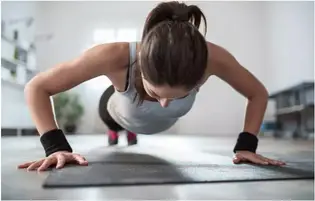 The more you challenge your muscles, the faster they'll grow. You don't need an expensive gym membership to gain muscle mass. With just a few pieces of equipment or your own body weight, you can do challenging home workouts that will build muscle fast. You just need to know the important factors involved in muscle gain, and you can make them work for you anywhere you choose to work out. Tip To build muscle fast, you need to challenge each muscle group with high-volume, twice-weekly workouts. Equipment for Home Workouts Do you really need equipment to build muscle and strength? According to Al Kavadlo, CSCS, the answer is a resounding no. Classic calisthenics exercises, such as pushups, pullups and squats, are enough for the beginner to start building muscle quickly at home. For the more advanced athlete, progressive variations can keep your muscles challenged and growing for years, Kavadlo says. But some people like using equipment, and that's fine too. You can outfit your home workout space with the essentials — or more, depending on your budget — that will allow you to do a variety of fun and challenging exercises in your home workout. Consider using:
Fastest Way to Build Muscle There's good news and bad news about building muscle fast when you're just starting a resistance-training program. The bad news is that during the first few weeks of your program, you might not make any gains at all. A 2016 study in the Journal of Physiology found that while muscle damage — necessary for hypertrophy, or muscle growth — was highest among untrained subjects in the first three weeks of a resistance-training program, it was not associated with hypertrophy. This is because muscle protein synthesis during this time is mainly directed at repairing the damage, rather than building mass. As the body adapts to exercise, there is less muscle damage after training sessions and greater muscle growth. The study researchers concluded that hypertrophy only occurs after accumulated intermittent increases in muscle protein synthesis. Rate of Muscle Gain The good news is that you only have to wait about three weeks until your body starts building, rather than just repairing, muscle. After that period, you will put on muscle relatively quickly. According to strength and conditioning coach Eric Bach, beginners gain muscle at a faster rate than intermediate and advanced lifters. On average, the maximum rate of muscle gain for beginners is 1 to 1.5 percent of total body weight per month compared to 0.5 to 1 percent of body weight for intermediate lifters and 0.25 to 0.5 percent for advanced lifters. Of course, this depends on a lot of variables, including training intensity, body type and diet, among other things. Volume and Frequency Whether you're working out in a gym or at home, workout volume and frequency — in addition to your diet — are the biggest factors in building muscle fast. Although you should be conservative in the first few weeks while your body is adapting to exercise, after that you will build more muscle faster by working out often at a high intensity and with a high volume (sets and reps). Basically, the more you challenge your muscles, the more growth you'll stimulate in a shorter period of time. According to a 2017 systematic review and meta-analysis in the Journal of Sports Science, volume is crucial for hypertrophy. In the 15 studies analyzed, the researchers found that each additional set of an exercise led to an increase in muscle size. This dose-response relationship means that the more sets you can get in, the faster you'll see growth. Having access to your home gym makes this easier, because a workout is always just a few steps away. As for frequency, a 2016 meta-analysis and systematic review in Sports Medicine found that training each major muscle group twice a week proved more effective for hypertrophy than only training once a week. The researchers could not, however, determine if training muscle groups three times per week leads to greater increases, but if more volume leads to more hypertrophy, then it's safe to say getting in three workouts per week per muscle group certainly can't hurt. Optimal Repetition Range There are a lot of opinions on the best number of sets and reps to do and the best rest period length between sets to build mass. As far as reps go, the usual recommendation is eight to 12 per set for hypertrophy, with higher reps being more effective for muscular endurance and lower reps more effective for strength. However, it might not actually matter that much. A 2016 study in Journal of Applied Physiology found that whether participants lifted lower weight for more repetitions or more weight for fewer repetitions, there was no difference in the amount of muscle growth at the end of a 12-week total-body resistance-training program. When you're working out at home, it will mainly depend on your available equipment. If you only have your own body weight to work with, you'll need to do more reps to exhaust your muscles. Sets and Rest When you're starting out, aim for 10 to 12 sets per muscle group, per week. As you start to see results and your body adapts, you should add more sets for more volume. With this approach, you can build muscle at home and improve your overall fitness. In a 2019 study in Medicine and Science in Sports and Exercise, participants who performed five sets per exercise per body part achieved significantly more muscle growth than participants who performed one or three sets. In total, the group that saw the most gains performed 30 sets for the upper body and 45 sets for the lower body per week. Rest periods between sets for hypertrophy are generally 60 to 180 seconds. However, you may want to lean toward the end of that range. In an eight-week study published in the Journal of Strength and Conditioning Research in 2016, participants who rested three minutes between sets gained more mass than participants who rested one minute, even when all other program variables remained the same. Tip Rest days are crucial for gaining mass. Your muscles grow between your workouts not while you're training them. Allow adequate rest between training sessions for the same muscle group. If you feel that you're getting weaker, not stronger, and you feel fatigued, you're not allowing enough recovery time. Best Exercises for Fast Gains Now the really confusing part — which exercises should you do to build muscle at home? The exercises you choose can be either compound, or multijoint, moves like squats and pullups, or they can be isolation, or single-joint, exercises like biceps and hamstrings curls. Which is better for hypertrophy? This is hotly debated in the fitness field, but according to research, both are equally effective. In a 2015 study published in the Asian Journal of Sports Medicine, 29 male participants trained the biceps using either lat pulldowns, a compound exercise, or biceps curls, an isolation exercise. At the end of 10 weeks, there was no difference in results between the compound and isolation group. The researchers concluded that exercise selection should be based on individual preference, time commitment and available equipment. Compound Body Weight Exercises You're not going to have as much variety at home as at the gym — no machines, maybe not even dumbbells or resistance bands. In that case, compound exercises that use large muscle groups and activate a lot of muscle fibers at once are going to be your best bet. Calisthenics expert and author Paul Wade recommends these exercises for your home body weight workout:
Of course, these are pretty challenging, and you may not be here quite yet. Start with the basic variation of each exercise and add on challenge and complexity as you get stronger. If you do have resistance equipment at home, you can do heavy squats, dead lifts, military presses and other classic lifts that build mass. The key is to continue to progressively load the muscles, which is what will encourage the most muscle growth ASAP and over time. How Many Days a Week Should I Work Out to Build Huge Muscles? Workout frequency is a much-debated topic in the fitness world. Is more better? Or do muscles need more recovery to reach their full size potential? The answer is, unfortunately, not cut and dried. While research reveals some benefit to higher training frequencies, it may be total volume that makes more of a difference. Ultimately, it's whatever works best for your own body. Training Frequencies Explained Training frequency is how often you train a single muscle group each week. There are many popular schools of thought on this. According to competitive bodybuilder Doug Brignole, Arnold Schwarzenegger used to train each body part three times a week: chest, shoulders and back on Mondays, Wednesdays and Fridays, and arms and legs on Tuesdays, Thursdays and Saturdays. That was his bodybuilding training frequency of choice — or at least one of them — and it worked for him. On the other end of the spectrum, renowned strength coach Charles Poliquin touted the German Volume Training method in which each muscle group is worked only once per week in a very specific volume — 10 sets per exercise. According to Poliquin, this training frequency helped Canadian weightlifter and Olympic silver medalist Jacques Demers build his massive thighs, and it was used by professional bodybuilder Bev Francis in her early career to increase muscle mass. Workout Frequency vs. Volume You can't talk about training frequency without also discussing training volume. Training volume is the amount of work you do in each workout — the number of sets and reps. For example, Brignole explains that Schwarzenegger and his counterparts used to do 20 sets per body part per workout — 60 sets per week. That's quite a high a volume. Poliquin's German Volume Training method only includes 10 sets of a single exercise per body part per week, which is significantly less than Schwarzenegger's routine. What the Research Says If you find such disparity confusing, scientific findings aren't going to do much to clarify. A study published in 2018 in The Journal of Strength and Conditioning concludes that doing eight sets per body part twice a week had only a slight hypertrophic benefit over doing 16 sets once a week. A 2018 study featured in PeerJ compared the effects of equal-volume once-weekly or twice-weekly training sessions on muscle gain. The group training once a week had significant increases in biceps (elbor flexor) muscle thickness. But a study published in 2015 in the Journal of Sports Medicine and Physical Fitness showed no differences in hypertrophy between equal-volume workouts performed either once or twice weekly. Another study published in Applied Physiology, Nutrition and Metabolism in 2018 determined that both a high-frequency, low-volume and high-volume, low-frequency training program increased lower body mass, but only the high-volume, low-frequency plan increased upper body mass. Still More Research Yet more research muddies the waters. A study published in 2018 in the Journal of Strength & Conditioning Research concluded that high-frequency training volume was no more effective than low-volume training frequency on hypertrophy. On the other hand, another 2018 study in the Journal of Strength & Conditioning Research found that there were significant hypertrophic benefits of high-frequency training for a group that performed five total-body workouts each week compared to a group that worked out each muscle group only once a week. And an additional study published in 2016 in the International Journal of Exercise Science showed that there was no difference between equal-volume high- versus low-frequency training. Making Sense of It One wonders if there is a real answer among all this research. There are many variables to consider: the training status of the study participants (trained versus untrained), the methods used to assess growth (lean body mass versus muscle thickness) and the relative difficulty of measuring hypertrophy versus strength, which tends to have much cleaner results, according to competitive powerlifter and trainer Greg Nuckols. Nuckols conducted extensive analyses of the research on bodybuilding training frequency and found that untrained lifters saw better results from higher training frequencies than did trained lifters. And in studies that assessed hypertrophy using lean muscle mass versus muscle thickness, higher frequencies also tended to have a greater hypertrophic effect, according to Nuckols. Overall, higher-frequency training had significant benefit over low-frequency training; however, Nuckols notes that this benefit was smaller for trained lifters. Getting to the Point The goal of lifting weights is to stimulate muscle protein synthesis, the post-workout state in which your body is creating muscle protein at a higher rate. Nuckols surmises that higher frequencies are more effective because they catalyze muscle protein synthesis more often throughout the week. Whether or not more frequent sessions should be low volume or high volume is less clear. There is a dose-response relationship between training volume and muscle growth; more sets lead to greater muscle hypertrophy, according to a systematic review and meta-analysis published in 2017 in the Journal of Sports Sciences. If you do more per-session volume, muscle protein synthesis is increased and extended, explains Nuckols. Because of that, it's unclear whether more frequent lower volume workouts are more or less effective than less frequent, higher volume workouts. What Should You Do? Ultimately, the answer is to do as much as you have time for but don't overdo it — which leads to overtraining and injury. If you're working out 6 days a week, you're not going to be able to do as much volume per session without it backfiring. If you only train once a week, you may find that you're fatiguing before you can get in as much volume as you'd like. Therefore, your sweet spot might be somewhere in between. If you're not seeing the results you want with your current routine, first try adding frequency without adding volume, suggest Nuckols. Once you assess your body's response and ability to recover, you can add volume to each session. Other Training Tips Frequency and volume aren't the only factors involved in building big muscles. Rest periods between sets are also important. One to three minutes is the norm, but a study published in 2016 in the Journal of Strength and Conditioning Research showed that participants who rested three minutes between sets gained more muscle than those who rested only one minute, even though the workouts were otherwise identical. Your nutrition is critical. Even if you found just the right bodybuilding training frequency, if you're not getting enough calories and macronutrients, you won't put on mass. To build muscle, explains body transformation expert Michael Matthews, you need to be in a calorie surplus and consume adequate protein and carbs. This gives your body the energy and raw materials it needs to build muscle. Last, recovery is just as important as the work you do in the gym. If you sacrifice proper recovery for more gym sessions, you will sabotage your efforts. If you add frequency and find that your workouts suffer, drop the frequency back down. How to Make Your Arms Big Really Fast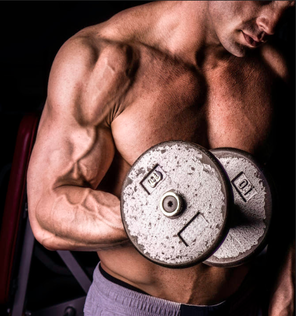 Although it's impossible to naturally achieve huge muscle growth in just a few weeks, there are some steps you can take to dramatically speed up your progress. Your exact rate of muscle growth is largely determined by gender, age, body type and genetics. Over the course of a year, you'd be doing well if you steadily gained 0.4 pounds of muscle per month, but there are some things you can do to stack the deck in your favor and make gains as quickly as possible. Exercise, Recovery and Nutrition Step 1 Complete one or two resistance training workouts per week, targeting your biceps, triceps and shoulders. Use free weights or cable weight machines to perform one or two exercises for each muscle group. Regular curls, hammer curls and chin-ups will target the biceps. For the triceps, body dips, dumbbell kickbacks and triceps extensions will be effective. Shoulder exercises include overhead presses, lateral raises, shrugs and reverse flies. Step 2 Do three to six sets of each exercise using a weight you can only lift six to 12 times using perfect form. A 2004 article published in the "Journal of Sports Medicine" concluded that the optimal load for muscle growth was between 80 and 95 percent of your 1-Repetition Max. A 1RM is the amount of weight you can safely lift for only one repetition, unassisted. Step 3 Add multi-joint compound exercises to your lifting routine. Limiting yourself to exercises that only target one muscle at a time is not the best way to gain size, even for that muscle. Doing compound exercises like pushups, squats and compound rows release more anabolic hormones which are key for protein synthesis within muscle cells. Step 4 Rest each muscle group for at least 24 hours, but preferably 48 hours or more before working it again. Full muscle recovery is key to muscle growth, so the belief that lifting more frequently will result in faster growth is flawed. Although it is important to stress your muscle fibers during a workout, the actual growth only occurs during the rest and recovery phase, and ideally, you want to give your body a full 48 hours to do its work. Step 5 Get a full night's sleep every night. Sleep is important for muscle growth because that's when the body produces hormones that stimulate protein synthesis. Step 6 Consume enough protein daily and vary your protein sources; 1.6 to 1.7 g of protein per kilogram of body weight per day is recommended. It's important to choose a variety of protein sources so that you get adequate amounts of all of the essential amino acids. The amino acid leucine is especially important to muscle growth. Healthy sources of protein include poultry, fish, eggs, nuts, seeds and legumes. Things You'll Need
Tip Eat a small meal or snack that combines protein and carbohydrate immediately before or after a workout, to optimize potential muscle growth. Remember that in order to gain weight, you'll need to eat more total calories. Just beware of consuming too much saturated fat. Warning Always use proper form when exercising. Anabolic steroids are not deemed safe and should not be used.  By Jason Aten Tech columnist Here's what you should know about contact-tracing, and how the tech giants are planning to use it against a pandemic. Apple and Google see eye-to-eye on almost nothing. Their approach to developing hardware and software is almost the exact opposite, not to mention the way each thinks about user privacy. It seems a most unlikely partnership then that the two tech giants have joined forces to develop a standard to aid public health organizations in the fight against Covid-19. Specifically, the companies announced on Friday that they would both build software into their devices that can be used to help contact-tracing, a necessary tool for slowing the spread of a pandemic. In a statement, the companies announced: "In this spirit of collaboration, Google and Apple are announcing a joint effort to enable the use of Bluetooth technology to help governments and health agencies reduce the spread of the virus, with user privacy and security central to the design." One of the things that this reminds us is that while the two companies are fierce rivals in almost every aspect of their businesses, these are extraordinary times. Apple and Google account for the operating systems that power some 99 percent of all mobile devices, putting them in a unique position to help. Public health officials have said that contact-tracing is an important tool, especially in helping all of us get back to normal--or whatever the new version of normal looks like. Contact tracing is simply taking the people who have been diagnosed or tested positive, and then identifying anyone they may have come in contact with. Those individuals can then be notified and tested, or isolate until it's no longer likely that they have been infected. The problem is that if you test positive, it can be difficult to identify all of the people you may have come into contact with. If, for example, you went to the grocery store over the weekend, it's entirely possible that you could have come in close enough contact to spread the coronavirus before you even knew you were contagious. The technology being built by Google and Apple would allow your mobile devices to communicate in a way that the people you came into contact with could later be notified. The first step is the development of an API by both companies, that will allow the development of iOS and Android apps that can be used for individuals to opt-in.
Then, both companies plan to introduce technology that works with Bluetooth, which would allow contact tracing on a much larger scale down the road. Of course, people get a little nervous anytime technology companies start talking about things like this. That's fair considering that there is no shortage of tech companies that have built entire business models on monetizing our personal information. The companies acknowledge those concerns and addressed them directly in their joint statement: "Privacy, transparency, and consent are of utmost importance in this effort, and we look forward to building this functionality in consultation with interested stakeholders. We will openly publish information about our work for others to analyze." While Google doesn't exactly have a great track record when it comes to user privacy, Apple has long made it a core of its brand identity. The companies have even released a series of white papers detailing how they intend to protect privacy while still providing the necessary information to public health officials. If nothing else, the joint effort is a reminder of how important of a role technology plays in our lives, and how important it will be in getting life back to normal. There are very smart people at both Apple and Google, and right now we're counting on them to do what they can to help. By Justin Bariso for Bergen Review Media
In a recent interview, Bill Gates shared some predictions about the new normal that can help your company. Microsoft co-founder Bill Gates went live on LinkedIn to answer questions about the novel coronavirus, including what we should expect life to look like over the next few months, and the next several years. Speaking with LinkedIn editor-in-chief Daniel Roth on "This Is Working," Gates said it will be a while before many things get back to normal. And a lot about everyday life has probably been changed forever. Gates said he believes the U.S. could begin opening back up in early June, if things go well. But he describes this "opening up" more as a "semi-normal" than a return to what many are used to. "It won't be where you're doing large public gatherings or even filling up a restaurant," says Gates. "I do think that things like running factories, doing construction, going back to school--those things can be done." But when it comes to other industries, including hospitality, sports events, and even real estate, Gates believes it will take much longer to recover. "Will people want to go and travel?" Gates questioned. "Will they want to go to restaurants? Will they even think, you know, buying a new home is an appropriate thing? So, even once the government is saying these activities are OK, we can't expect the demand side to re-emerge overnight." Gates believes it will require approval and widespread manufacturing of an effective vaccine before any of these changes begin to take place--and he predicts we're still 18 months away from producing that vaccine. These things will change. Beyond the aforementioned issues, Gates believes the COVID-19 pandemic will keep forcing us to push things digitally. "There are a few things, like business trips, that I doubt will ever go back," Gates said. "I mean, there will still be business trips, but you know, less." And other things, says Gates, will likely be changed for good. For example, Gates cites Microsoft as having gone to virtual shareholder meetings even before the outbreak of the pandemic. As many other companies begin to follow this model, says Gates, he doubts they will want to go back to in-person shareholder meetings. Gates also says as new software innovations emerge, things will continue to change. "What is a virtual courtroom?" he asked. "What is a virtual legislature? How do you create the logic?... In some ways, you can create something that's actually more efficient and better than what was there before." How to adapt? So, if you're a business owner, how can you adapt to the new normal Gates has described? As an example, let's say you run a restaurant. Until social distancing restrictions ease up, you need to make sure you have a robust pickup and delivery service. Stop asking yourself if you want to go that route. It's no longer an option. For now, it's pickup and delivery, or close down. But unlike Field of Dreams, just building out your service doesn't mean people will automatically come. Make sure to adjust your website to prominently feature your new pickup and delivery options. And don't forget the power of content marketing: Work on creating some YouTube videos that demonstrate you cooking some of your most popular dishes. Showcase your personality. Don't worry about people wanting to stay home and cook instead of ordering out: Some will, some won't. Your market is the ones who won't. A few great videos shared on social media may be all it takes to get you back in business. As another example, let's say you're focused on conferences and events. Have all your speaking gigs have canceled? Is your company responsible for putting on events? Yes, everyone is going virtual. But not everyone has the ability to put on a high-quality show. Although the logistics of virtual conferences are much different than live ones, there's still a lot of work to be done behind the scenes. Get familiar with technology, features, and effects that will separate your conference from the rest of the pack. Then, do a few for free, so you can hone your skills and create a portfolio. Once polished, use that portfolio to start selling your speaking or conference services to a huge market that is suddenly looking for online training and events. And let's look to tourism-- the tourism industry is definitely one of the hardest hit by the pandemic. But maybe you can learn from "Greece From Home," a brilliant initiative by the Greek National Tourism Organization, in cooperation with Google. This site is also built on the principle of content marketing: using great online content to create a relationship with potential customers. Through YouTube videos and other content, creators give viewers a chance to tour archeological sites and museums, experience beautiful scenes of nature, and even take "walking" tours or visit restaurants--all virtually, of course. Done right, your content might be able to bring in revenue through ads or product sales. And at the very least, it's a way to keep in touch with your audience until they are willing (and able) to travel again. Even if your business isn't in one of these industries, hopefully this sparks some ideas. The key is to redirect your efforts and use your time wisely. Because very likely this new normal is here to stay. And the quicker you adjust to that fact, the greater your business's chance to survive, and possibly thrive. 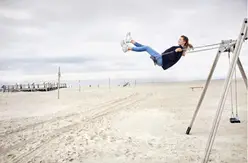 Jeroen raaijenbrink Contributor The coronavirus pandemic has a lot of dark sides. Around the world, people get ill and die, schools close, the healthcare system is overloaded, employees lose their jobs, companies face bankruptcy, stock markets collapse and countries have to spend billions on bailouts and medical aid. For everyone, whether directly hurt or not, Covid-19 is a huge stressor shaking up our psyche, triggering our fears and uncertainties. No matter how serious and sad all of this is, there are upsides as well. Therefore, along the Monty Python song “Always look on the bright side of life” let’s not forget those and make the best of what the crisis gives us. As the good old SWOT analysis tells us, there are not only threats, but also opportunities. With opportunities I don’t mean that the crisis provides extra business for companies like Zoom and Go to Webinar that enable virtual meetings, or for Amazon, which is planning to hire another 100,000 employees. The latter is probably more a threat than an opportunity for most, especially for the mom & pop stores that go through difficult times already. With opportunities I mean general opportunities that are available for most people affected by the crisis. The current crisis offers at least seven of them: Opportunity 1: More time In today’s overheated economy time is often seen as the most valuable and sparse thing we have. Covid-19 shows why: because we have stacked our week with social gatherings and entertainment such as going to the theater, birthdays, cinema, restaurant, bar, sportclub, gym, music, festivals, concerts and what is more. Suddenly, all of that is cancelled or forbidden, giving us significant amounts of extra time. And still, live goes on. This shows us how easy it is to clear our calendars. Obviously this doesn’t apply to the health-care sector and other crucial sectors, but beyond those it applies to a large majority of sectors. The opportunity is that we can spend this time on other things—or even better, on nothing and enjoy the free time. Looking at the crowded parks, waste collection points, garden centers and DIY stores in the last week, many people seem to have a hard time with the latter. Instead of enjoying the extra free time, they fill it immediately with other activities. To seize this first opportunity though, re-arranging how you spend your time and reserving time for nothingness is key. Not just during the crisis, but also after it. The advice in my previous article on the Covid-19 crisis could help in realizing this. Opportunity 2: Reflect and reconsider The fact that the coronavirus disrupts our day-t0-day lives provides an opportunity to reflect on things and to reconsider what we do, how we do it and why we do it. Things we took for granted—like going to the gym—are suddenly not possible anymore. Furthermore, many people have had to change their mode of working and work from home instead of at the office. This means that a lot of our routines are interrupted. This offers a great opportunity to rethink our habits and routines and make changes. Now that you haven’t been able to go to the restaurant twice a week, commute 2 hours per day, hang out with your friends or go to a party every weekend, you can reflect on whether you really want to continue doing so after the crisis. The virus forces you to make changes to your daily life that you might actually want to keep also after the crisis. Opportunity 3: Speed and innovation Many organizations suffer from slow procedures, complex bureaucracies and rigid hierarchies making organizational life less than pleasant. The coronavirus has forced many of them to break through these rigid systems and act instantly. Suddenly procedures can be skipped or accelerated, rules can be side-tracked and decisions can be made more autonomously without formal approval. And suddenly employees are allowed to work from home without direct supervision. Covid-19 shows that, as soon as there is a strong enough stimulus, things can change. This leads to remarkable innovations. Not being allowed to open their doors, restaurants, for example, are shifting to delivery mode. And schools suddenly do much of the teaching and even some of the testing online. This brings the opportunity to create innovations now that can be maintained after the crisis. And it also can help to keep the current speed and innovation mode afterwards. Opportunity 4: Better meetings As referred to in an earlier article, people spend up to 23 hours per week in meetings, half of which are considered a failure or waste of time. The current crisis has forced us to rethink how we deal with meetings. Because in many countries it is not allowed anymore to meet with a group of persons, many meetings are cancelled. And when they still take place they are mostly virtual and shorter. As such, it provides an excellent opportunity for resolving one of the most disliked parts of organizational life. The technology for this is already present and mature for a couple of years, but the coronavirus triggers a sudden need for it. The real opportunity here is to make systematic changes so that meetings will be more effective, also after the crisis. Opportunity 5: Reconnect and help Challenging times offer a great opportunity for social bonding and other ways of connecting to and helping people. Of course, not being able to visit friends or family has increased isolation and feelings of loneliness in some cases. But the feeling of “we’re in this together” has also triggered interesting ways of connecting. Some of those have gone viral—such as Italians singing together from their windows and balconies—but there are many small, local initiatives too to connect and help people who need it. In the individualized societies many of us live in, this provides opportunities to reconnect and create more social coherence. Not only during the crisis, but also afterwards. This opportunity comes with a big caveat though. Parallel to these nice initiatives we also witness how far people go to protect themselves and their families. People hoard food, medicine, toilet paper and guns without thinking a second of others. However, while it triggers self-serving egocentric behavior too, the Covid-19 crisis does provide us the opportunity to reconnect and show our social side. Opportunity 6: Cleaner environment The virus caused a shutdown or dramatical decrease of industrial activities. Factories are closed or operate far below their capacity, road traffic has reduced radically and air traffic collapsed, and the lack of tourism has emptied the streets in overcrowded cities like Venice, Amsterdam and New York. While this may be bad news for most people and especially those working in the affected industries, this is also good news for our planet. Covid-19 causes a significant reduction in green house gasses and other air, water and land polluting outputs. In Venice this has allegedly led to dolphins return after just a couple of weeks (although some argued this to be a hoax). Whether the particular example is a hoax or not is not so relevant. The fact is that the shutdown and lockdown of large parts of our economy is good for nature—at least on the short term. The opportunity this provides, is to keep parts of this in place also after the crisis to make long-term improvements. Along the line of the previous opportunities, the current crisis provides us an opportunity to reconsider our lives and reorganize it in a way that has less impact on our planet. Opportunity 7: Modesty and acceptance The final opportunity that the Covid-19 crisis offers, is a chance to create awareness for the moderate role we play on this planet and accept that things cannot always go as we want them to go. The Covid-19 pandemic is a global crisis chat is unprecedented in modern peace time. We had other pandemics like SARS, but their impact was less substantial. And we had the 1973 oil crisis, but that was a man-made crisis. The coronavirus is not man-made and yet disrupts lives across the planet. As such, the virus shows us that, no matter how well-planned and organized we are and no matter how much we live in the Anthropocene—the era characterized by significant human impact—we are not in control. One simple virus is disrupting everything. This offers a great opportunity. In almost every aspect of life we want to be in control. Whether it is health, airline safety or our calendars, we live in the illusion that full control is possible. The virus can help us create awareness that this is not the case. It provides an opportunity to take a more modest role and accept that many things are simply beyond our control. Once again, the Covid-19 crisis has a large dark side. But as these seven opportunities show, it has positive sides as well. Since all seven opportunities require a quite fundamental change in how we approach the world, seizing them can take substantial time. In that sense, and if we keep on looking at the brighter sides of life, the longer the crisis lasts, the larger the opportunities are and the bigger the chances are of actually making changes to our deeply rooted habits and convictions. 
Many states are relaxing alcohol delivery laws as liquor stores are deemed an essential service during the pandemic. Here's how to find a service you can use in your area. Many states are relaxing alcohol delivery laws as liquor stores are deemed an essential service during the pandemic. Here's how to find a service you can use in your area. Running low on beer, wine and spirits? That's little surprise considering our current state of affairs. Maybe you've had lots of virtual happy hours over Zoom. Or perhaps you're planning to unwind from the stress of the coronavirus outbreak with a Netflix Party and an adult beverage, but you can't summon the energy to head to the store while wearing homemade face mask. Alcohol delivery is looking pretty good.You're not alone in this decision. According to research from Nielsen, online alcohol sales specifically were up 243% last week alone in the US. As lockdowns, quarantines and shelter-in-place orders keep more people indoors, limit shopping excursions and all but shutter local bars and restaurants, many are turning to other means for keeping their favorite booze in stock.A number of national delivery services, wine club services and larger regional stores are still delivering alcohol during the pandemic. Some restaurants offering takeout and delivery also offer alcoholic drinks -- though some states require you to buy food, too. (It's considered safe to order food or alcohol from restaurants and stores, according to the Centers for Disease Control and Prevention, though you can follow certain precautions to keep yourself and your delivery driver healthy.) Alcohol delivery laws vary by state, so not every service is available in every area. Many states, however, have deemed liquor stores an essential service during the pandemic, and are now allowing delivery of such beverages from restaurants and liquor stores where they may not have in the past. There are a ton of online liquor delivery services, as well as wine- and beer-of-the-month clubs. Many regional liquor stores also have delivery options. If you're looking to stock up on some booze without going out to the liquor store, here are a few services to check out. Just remember that the same rules that have always applied to alcohol apply now, more than ever: Only enjoy booze in moderation, and never drink and drive.
 Adjusting to life under siege by SARS-CoV-2 has not been easy; each new day brings with it novel guidelines and restrictions aimed at keeping populations safe as cases soar worldwide. Many of us—most of us, I hope—are staying at home as much as possible to give hospital workers a fighting chance at saving the lives affected by COVID-19. Still, there is one place few of us can avoid: the grocery store. Everyone needs food, and while grocery delivery is still available in some places—albeit with weeks-long wait times—most of us will be forced to venture out sometime in the next month (or more) to restock our shelves. It’s a daunting thought, given how trafficked a grocery store is, and many shops are taking measures to help keep shoppers and clerks safe as both sides of the cashier stand navigate this tricky business of stopping the spread. Sneeze guards have been installed in many stores, for example, to protect cashiers who have no choice but to stand fewer than six feet away from customers. Strategically-placed floor tape in other stores helps customers visualize the amount of distance they need to maintain from one another. In some shops, lines snake around the block as a limited number of customers are allowed in at a time. And so on. Not all stores are instituting such measures, however, and even if you shop at one that is, there are additional behaviors you should ditch/adopt to help keep yourself and other shoppers safe. Below, experts share a few new guidelines to follow so as to avoid becoming the Typhoid Mary/resident jerk of your local grocery store. 1. ORDER DELIVERY IF POSSIBLE “Ideally, it would be best to stay home, physically isolated, and to limit your exposure to others and their exposure to you as much as is possible,” says Dana Hunnes, PhD, RD, a professor at the UCLA Fielding School of Public Health, when I ask her whether or not we should be opting for delivery over in-person visits. If you do manage to get a delivery slot, ask neighbors or friends if there’s anything they need so as to maximize your shopper’s efficiency while helping others avoid the store, too. And be sure to tip well. (Very well.) These workers are helping you and risking themselves day after day, and many rely on tips to get through these tough times. So be thoughtful and tip a good percentage (most services let you do this online and/or through their app). 2. MAKE EACH VISIT COUNT Hunnes says it’s best to limit your shopping trips as much as possible by waiting until your list is long to hit the store. “Now is not the time to impulse buy and stand in line for one item you’re craving,” she says. As with delivery, you can combine lists with friends and neighbors so as to lower the overall number of shoppers flooding into stores, too. 3. DON’T WASTE PERSONAL PROTECTIVE EQUIPMENT Generally speaking, you shouldn’t suit up for a trip to the store. “Unless you are ill or immune-compromised, it is not recommended to wear any protective gear,” says Hunnes. “Right now healthcare professionals need all the PPE they can get as they are the frontline.” You can, of course, wear gloves, though Hunnes says you’re probably more likely to remember to wash your hands than you are to not touch things with gloves. You can also DIY something to cover your face, e.g. a bandana, but Hunnes warns this might not actually be all that helpful, either. “Wearing a mask may give you a false-sense of safety, and you may be more likely to touch your face to adjust the mask,” she says. Studies have shown that wearing surgical masks can help stop the spread of respiratory viruses to an extent, but doctors admit there isn’t a definitive answer as to whether or not you need to wear one. “Honestly, we aren’t sure how helpful these homemade masks and makeshift masks with bandanas and scarves are, but it’s better than nothing,” adds Sonia Vaidian, MD. 4. IF THERE’S A LINE OUTSIDE, MAINTAIN SOCIAL DISTANCING BEST PRACTICES That’s six feet in front of you, and six feet behind you, says Food Safety Coach Jeff Nelkin. No exceptions. 5. DON’T HOARD Yes, this is a scary time, and it’s tempting to take as much as you can at once so as to a) not have to go back and b) not run out of food in a worst case scenario. With that said, you may be taking food out of the cart of, say, an elderly or otherwise vulnerable person who took a real chance to get to the store. “Make a list and buy only what you need, or what you know you can actually eat during a set time period, so that you’re not taking from someone else who might need an item—and then you end up throwing it away because it went bad,” says Hunnes. If you do *accidentally* take more than you need, consider offering to share with friends or neighbors. 6. CHECK YOUR PRIVILEGE (AND CHECK THE LABELS AND TIME) Speaking of elderly customers, many stores are implementing senior hours (usually the first hour after the store opens) to make sure that elderly customers get what they need while being socially distant. You also should look up when your state provides and gives out SNAP (Supplemental Nutrition Assistant Program) and WIC (Women, Infants, and Children) benefits. (It’s usually the first of the month.) Unless a food emergency, try to avoid the supermarket on these first few dates. If you have to go, check the store labels when at the store during this time (and early in the month) to avoid buying products that are covered under these programs and opt for a different brand if possible and available, as those needing those items do not get to swap for substitutions. 7. DON’T TOUCH THE FREAKING PRODUCE “When you go to the produce section, everybody is doing like what they were doing before the virus—touching and squeezing everything,” says Nelkin. “We’re talking about 30 to 50 people that have made skin contact with these products by the end of the day.” Instead of engaging in this coronavirus-inappropriate behavior, Hunnes suggests visually assessing produce when possible. If this approach fails to give you the information you need, Nelkin suggests putting your hand inside a plastic produce bag and then grabbing what you want and squeezing, etc. “That way, you’re minimizing skin contact because you’re inverting the bag and using it as a glove,” he says. To protect yourself from produce potentially contaminated by less thoughtful patrons before you get to it, Hunnes recommends cleaning your hands after you touch the produce and then washing the produce as soon as you get home, before you put it in the fridge. 8. BE MINDFUL OF YOUR CONTACT WITH PACKAGED GOODS, TOO While you’re less likely to catch the coronavirus via contact with products, it is able to live for up to 24 hours on cardboard and 2-3 days on plastic. So, touch only what you’re fairly positive you’re going to add to your cart, wipe plastic goods down when you get home, and use hand sanitizer when you leave the store (before you get into your car) and then wash your hands after you unpack your groceries. 9. AVOID CROWDED AISLES If your grocery store isn’t limiting the number of customers allowed in at any given time, do your best to maintain six feet of distance regardless. “As much as humanly possible, try to shop during the least-crowded times and on the least-crowded aisles,” says Hunnes. “Keep your eyes open and your wits about you.” 10. DON’T DROP THE SCOOP If you’re buying from a bulk barrel, don’t be that guy/gal who drops the potentially contaminated scoop handle into the food, says Nelkin. To avoid making skin contact with that handle yourself, utilize the inverted produce bag trick from #5 above (or, gloves). 11. AVOID THE BUFFETS Nelson thinks these should be shut down, and suggests avoiding them where they are not. 12. PAY WITH A CREDIT CARD, NOT CASH Pay with your credit card, and then wipe it after you swipe it. “You cannot necessarily prevent full exposure (e.g. cleaning machines that you’re using, etc), but you can clean your own stuff (e.g. credit card, wallet, phone case) after you touch them,” says Hunnes. “Clean your hands before and after you clean the items, too.” For even fewer touchpoints, you can use Apple Pay on your phone where possible (e.g. Trader Joe’s) as well. 13. WIPE YOUR CART/BASKET AFTER YOU USE IT While you should definitely wipe down your cart or basket before you use it, it doesn’t hurt to be thoughtful and give one or the other a swift clean after you use it, too, because, well, kindness.  You already know that exercise is good for your body. But did you know it’s also effective in dealing with depression, anxiety, stress, and more? Exercise is not just about aerobic capacity and muscle size. Sure, exercise can improve your physical health and your physique, trim your waistline, improve your sex life, and even add years to your life. But that’s not what motivates most people to stay active. People who exercise regularly tend to do so because it gives them an enormous sense of well-being. They feel more energetic throughout the day, sleep better at night, have sharper memories, and feel more relaxed and positive about themselves and their lives. And it’s also powerful medicine for many common mental health challenges. Regular exercise can have a profoundly positive impact on depression, anxiety, ADHD, and more. It also relieves stress, improves memory, helps you sleep better, and boosts your overall mood. And you don’t have to be a fitness fanatic to reap the benefits. Research indicates that modest amounts of exercise can make a difference. No matter your age or fitness level, you can learn to use exercise as a powerful tool to feel better. Exercise and depression Studies show that exercise can treat mild to moderate depression as effectively as antidepressant medication—but without the side-effects, of course. As one example, a recent study done by the Harvard T.H. Chan School of Public Health found that running for 15 minutes a day or walking for an hour reduces the risk of major depression by 26%. In addition to relieving depression symptoms, research also shows that maintaining an exercise schedule can prevent you from relapsing. Exercise is a powerful depression fighter for several reasons. Most importantly, it promotes all kinds of changes in the brain, including neural growth, reduced inflammation, and new activity patterns that promote feelings of calm and well-being. It also releases endorphins, powerful chemicals in your brain that energize your spirits and make you feel good. Finally, exercise can also serve as a distraction, allowing you to find some quiet time to break out of the cycle of negative thoughts that feed depression. Exercise and anxiety Exercise is a natural and effective anti-anxiety treatment. It relieves tension and stress, boosts physical and mental energy, and enhances well-being through the release of endorphins. Anything that gets you moving can help, but you’ll get a bigger benefit if you pay attention instead of zoning out. Try to notice the sensation of your feet hitting the ground, for example, or the rhythm of your breathing, or the feeling of the wind on your skin. By adding this mindfulness element—really focusing on your body and how it feels as you exercise—you’ll not only improve your physical condition faster, but you may also be able to interrupt the flow of constant worries running through your head. Exercise and stress Ever noticed how your body feels when you’re under stress? Your muscles may be tense, especially in your face, neck, and shoulders, leaving you with back or neck pain, or painful headaches. You may feel a tightness in your chest, a pounding pulse, or muscle cramps. You may also experience problems such as insomnia, heartburn, stomachache, diarrhea, or frequent urination. The worry and discomfort of all these physical symptoms can in turn lead to even more stress, creating a vicious cycle between your mind and body. Exercising is an effective way to break this cycle. As well as releasing endorphins in the brain, physical activity helps to relax the muscles and relieve tension in the body. Since the body and mind are so closely linked, when your body feels better so, too, will your mind. Exercise and ADHD Exercising regularly is one of the easiest and most effective ways to reduce the symptoms of ADHD and improve concentration, motivation, memory, and mood. Physical activity immediately boosts the brain’s dopamine, norepinephrine, and serotonin levels—all of which affect focus and attention. In this way, exercise works in much the same way as ADHD medications such as Ritalin and Adderall. Exercise and PTSD and trauma Evidence suggests that by really focusing on your body and how it feels as you exercise, you can actually help your nervous system become “unstuck” and begin to move out of the immobilization stress response that characterizes PTSD or trauma. Instead of allowing your mind to wander, pay close attention to the physical sensations in your joints and muscles, even your insides as your body moves. Exercises that involve cross movement and that engage both arms and legs—such as walking (especially in sand), running, swimming, weight training, or dancing—are some of your best choices. Outdoor activities like hiking, sailing, mountain biking, rock climbing, whitewater rafting, and skiing (downhill and cross-country) have also been shown to reduce the symptoms of PTSD. Other mental and emotional benefits of exercise Sharper memory and thinking. The same endorphins that make you feel better also help you concentrate and feel mentally sharp for tasks at hand. Exercise also stimulates the growth of new brain cells and helps prevent age-related decline. Higher self-esteem. Regular activity is an investment in your mind, body, and soul. When it becomes habit, it can foster your sense of self-worth and make you feel strong and powerful. You’ll feel better about your appearance and, by meeting even small exercise goals, you’ll feel a sense of achievement. Better sleep. Even short bursts of exercise in the morning or afternoon can help regulate your sleep patterns. If you prefer to exercise at night, relaxing exercises such as yoga or gentle stretching can help promote sleep. More energy. Increasing your heart rate several times a week will give you more get-up-and-go. Start off with just a few minutes of exercise per day, and increase your workout as you feel more energized. Stronger resilience. When faced with mental or emotional challenges in life, exercise can help you cope in a healthy way, instead of resorting to alcohol, drugs, or other negative behaviors that ultimately only make your symptoms worse. Regular exercise can also help boost your immune system and reduce the impact of stress. Reaping the mental health benefits of exercise is easier than you think Wondering just how much activity will give you a mental health boost? It’s probably not as much as you think. You don’t need to devote hours out of your busy day to train at the gym, sweat buckets, or run mile after monotonous mile. You can reap all the physical and mental health benefits of exercise with 30-minutes of moderate exercise five times a week. Two 15-minute or even three 10-minute exercise sessions can also work just as well. Even a little bit of activity is better than nothing If that still seems intimidating, don’t despair. Even just a few minutes of physical activity are better than none at all. If you don’t have time for 15 or 30 minutes of exercise, or if your body tells you to take a break after 5 or 10 minutes, for example, that’s okay, too. Start with 5- or 10-minute sessions and slowly increase your time. The more you exercise, the more energy you’ll have, so eventually you’ll feel ready for a little more. The key is to commit to some moderate physical activity—however little—on most days. As exercising becomes habit, you can slowly add extra minutes or try different types of activities. If you keep at it, the benefits of exercise will begin to pay off. You don’t have to suffer to get results Research shows that moderate levels of exercise are best for most people. Moderate means:
Overcoming mental health obstacles to exercise So now you know that exercise will help you feel much better and that it doesn’t take as much effort as you might have thought. But taking that first step is still easier said than done. Exercise obstacles are very real—particularly when you’re also struggling with mental health. Here are some common barriers and how you can get past them. Feeling exhausted. When you’re tired or stressed, it feels like working out will just make it worse. But the truth is that physical activity is a powerful energizer. Studies show that regular exercise can dramatically reduce fatigue and increase your energy levels. If you are really feeling tired, promise yourself a 5-minute walk. Chances are, you’ll be able to go five more minutes. Feeling overwhelmed. When you’re stressed or depressed, the thought of adding another obligation can seem overwhelming. Working out just doesn’t seem doable. If you have children, managing childcare while you exercise can be a big hurdle. Just remember that physical activity helps us do everything else better. If you begin thinking of physical activity as a priority, you will soon find ways to fit small amounts into a busy schedule. Feeling hopeless. Even if you’re starting at “ground zero,” you can still workout. Exercise helps you get in shape. If you have no experience exercising, start slow with low-impact movement a few minutes each day. Feeling bad about yourself. Are you your own worst critic? It’s time to try a new way of thinking about your body. No matter your weight, age or fitness level, there are others like you with the same goal of getting fit. Try surrounding yourself with people in your shoes. Take a class with people at a variety of fitness levels. Accomplishing even the smallest fitness goals will help you gain body confidence. Feeling pain. If you have a disability, severe weight problem, arthritis, or any injury or illness that limits your mobility, talk to your healthcare provider about ways to safely exercise. You shouldn’t ignore pain, but rather do what you can, when you can. Divide your exercise into shorter, more frequent chunks of time if that helps, or try exercising in water to reduce joint or muscle discomfort. Getting started exercising when you’re anxious or depressed Many of us find it hard enough to motivate ourselves to exercise at the best of times. When we feel depressed, anxious, stressed or have other mental or emotional problems, it can seem doubly difficult. This is especially true of depression and anxiety, which can leave you feeling trapped in a catch-22 situation. You know exercise will make you feel better, but depression has robbed you of the energy and motivation you need to work out, or your social anxiety means you can’t bear the thought of being seen at an exercise class or running through the park. So, what can you do? It’s okay to start small. In fact, it’s smart. When you’re under the cloud of an emotional disorder and haven’t exercised for a long time, setting extravagant goals like completing a marathon or working out for an hour every morning will only leave you more despondent if you fall short. Better to set achievable goals and build up from there. Schedule your workout at the time of day when your energy is highest That may be first thing in the morning before work or school, at lunchtime before the mid-afternoon lull hits, or for longer sessions over the weekend. If depression or anxiety has you feeling tired and unmotivated all day long, try dancing to some music or simply going for a walk. Even a short, 15-minute walk can help clear your mind, improve your mood, and boost your energy level. As you move and start to feel a little better, you’ll experience a greater sense of control over your well-being. You may even feel energized enough to exercise more vigorously—by walking further, breaking into a run, or adding a bike ride, for example. Other tips for staying motivated when you’re also struggling with mental health Focus on activities you enjoy. Any activity that gets you moving counts. That could include throwing a Frisbee with a dog or friend, walking laps of a mall window shopping, or cycling to the grocery store. If you’ve never exercised before or don’t know what you might enjoy, try a few different things. Activities such as gardening or tackling a home improvement project can be great ways to start moving more when you have a mood disorder—as well as helping you become more active, they can also leave you with a sense of purpose and accomplishment. Be comfortable. Whatever time of day you decide to exercise, wear clothing that’s comfortable and choose a setting that you find calming or energizing. That may be a quiet corner of your home, a scenic path, or your favorite city park. Reward yourself. Part of the reward of completing an activity is how much better you’ll feel afterwards, but it always helps your motivation to promise yourself an extra treat for exercising. Reward yourself with a hot bubble bath after a workout, a delicious smoothie, or with an extra episode of your favorite TV show. Make exercise a social activity. Exercising with a friend or loved one, or even your kids, will not only make exercising more fun and enjoyable, it can also help motivate you to stick to a workout routine. You’ll also feel better than if you were exercising alone. In fact, when you’re suffering from a mood disorder such as depression, the companionship can be just as important as the exercise. Easy ways to move more that don’t involve the gym
Don’t have 30 minutes to dedicate to yoga or a bike ride? Don’t worry. Think about physical activity as a lifestyle rather than just a single task to check off. Look at your daily routine and consider ways to sneak in activity here, there, and everywhere. Need ideas? We’ve got them. In and around your home. Clean the house, wash the car, tend to the yard and garden, mow the lawn with a push mower, sweep the sidewalk or patio with a broom. At work and on the go. Bike or walk to an appointment rather than drive, banish all elevators and get to know every staircase possible, briskly walk to the bus stop then get off one stop early, park at the back of the lot and walk into the store or office, take a vigorous walk during your coffee break. With the family. Jog around the soccer field during your kid’s practice, make a neighborhood bike ride part of your weekend routine, play tag with your children in the yard, go canoeing at a lake, walk the dog in a new place. Just for fun. Pick fruit at an orchard, boogie to music, go to the beach or take a hike, gently stretch while watching television, organize an office bowling team, take a class in martial arts, dance, or yoga. Make exercise a fun part of your everyday life You don’t have to spend hours in a gym or force yourself into long, monotonous workouts to experience the many benefits of exercise. These tips can help you find activities you enjoy and start to feel better, look better, and get more out of life. This article originally appeared on HelpGuide  When it comes to buying everyday necessities, you rarely question the prices because they’re must-haves in your life. Even when an item isn’t a necessity, you may still want a specific thing and don’t think twice about what you’re paying. However, there are a few things that you’re definitely paying way too much for. Keep these seven overpriced items on your list because you can save a lot of money on them every time you head to the store. 1. Ibuprofen According to GoodRx, the average retail price of Ibuprofen is about $13.89. If you’re constantly reaching for name brand bottles like Advil or Motrin, you could save by buying the generic brand instead. The ingredients are often exactly the same, yet name brands often mark up the price by 15 to 30 percent. So if you’re tired of overpaying for no reason, talk to a pharmacist and find the cheaper brand that’s right for you. Pro tip: GoodRx has a ton of coupons that you can quickly download to save on both over-the-counter and prescription medicines. 2. Laundry Detergent Like ibuprofen, name brands often mark up their prices on laundry detergent, so you might be overpaying on those bottles and pods. To save, buy in bulk at a wholesale club store like Costco or on Amazon, and always use a coupon. Even better, consider making your own laundry detergent at home to save over 25 cents per load. 3. Toothbrushes Let’s be real — paying for a toothbrush could be one of the biggest wastes of money ever. If you’re good about going to the dentist at least two times per year, then you should be getting a free toothbrush every six months. Even though you should really be swapping it out every three months or so, only needing to buy two toothbrushes per year instead of four can help save you money. Pro tip: Ask your dentist for two free toothbrushes at your six-month checkup to save even more. 4. Wine It’s no secret that wine by the glass at a restaurant is often insanely overpriced. In fact, it can be marked up 400 percent per glass compared to the price you’d pay if you bought the bottle yourself at a store or from a distributor. Save by buying wine in bulk and then bringing it to a BYO restaurant. 5. Electricity While it may not feel like it, you’re most likely overpaying for your electricity. From leaving energy vampires plugged in to forgetting to turn off the light when you leave a room, it can add up. Simply upgrading to LED bulbs, smart plugs and other techcan save you hundreds of dollars over the next several years. 6. Jewelry Diamonds can cost between 50 and 200 percent more than their wholesale prices, so be prepared to drop a pretty penny at that jewelry store. If you can buy directly from a wholesale company, go for it. Other ways to save include compromising on the various factors that determine the diamond’s worth or even buying them online. 7. Makeup That concealer you love could actually be worth 78 percent less than you’re paying for it. Makeup is often marked up a lot and it might not always be worth it. So don’t hesitate to try lesser-known, budget-friendly brands that may have the same ingredients in them and stock up on free samples. 8. Books It really only costs a few bucks to print a book, so paying full price for a brand new paperback could be a total ripoff. Instead, sign up for your local library and pay nothing to read the latest work from your favorite author. If you’re more of a digital person, Amazon offers a ton of e-books for a third or less of what they’d cost in print. 9. Clothes And Shoes Designer jeans can often be marked up more than 80 percent from what it actually costs to make them, while sneakers might only cost $15 to make when they’re sold for $70 or more. Save money on both clothes and shoes by shopping sample sales, using Chrome extensions for the best coupons or even buying items gently used. 10. Produce Your local grocery store might be ripping you off by marking up the prettiest produce by as much as 75 percent. Yep, people will pay more for the prettiest produce, while the oddly-shaped rejects can be bought for 50 percent off. Save by seeking out the ugly fruits and veggies. If you can’t find them, ask the manager. There might be budget-friendly bananas in the back! Pro tip: Don’t even think about going for the pre-cut stuff. It’s even more overpriced! 11. Cards If you’ve gone to the store to buy a birthday, anniversary, graduation or greeting card lately, then you’re well aware that they aren’t cheap. Cards can often cost upwards of $6 even without the fancy music playing from them. So head to the dollar store instead, where you can end up paying at least 80 percent less on one card. Before buying anything, do your research to see what it actually costs to produce it and then what the average retail price is at the store. You could save a lot of money by buying items with smaller profit margins and lower markups. However, not every item will have a more budget-friendly option for sale, so stick to couponing and shopping with a smart strategy, too. This article originally appeared on KBBonline.com It might be a dark time for the global population, but for the natural world it’s springtime. Usually this time of year has most of us feeling more energetic and productive, so why not reflect this in the heart of the home? To help people stay on top of their spring trend game while staying at home – and designing remotely – Wren Kitchens in Milford, Conn., has revealed the spring kitchen trends for 2020. Pick ‘n Mix Style Pretty pastels paired with crisp whites are the perfect combination to shake up the kitchen. Cotton candy pink is a sweet and sophisticated shade to add a pop of color to your design while subtly highlighting your fun and fashionable personality. Here Comes the Sun A burst of color will guarantee to bring the sunshine into your client’s kitchen. The bright, bold yellow with subtle orange undertones creates a real buzz to the room and leaves the space feeling fresh and vibrant. Plus, with a shade this sunny, it will provide sun all year round! Tropical Blend For the perfect pick-me-up kitchen, add a slice of citrus with zesty tones such as lemon and lime. Bright and colorful tones work exceptionally well with an ultra-modern, sleek design, and don’t forget you can make a real impact by focusing on certain areas such as islands and upper cabinets. Dusk and Dawn
Bring a warm, welcoming glow and create a real luxe look for a showstopping party kitchen. Go for gold with a contrasting profile to create a touch of luxury to your kitchen space. Inspired by natural patinas, you can bring the outside in with elements in metallic gold, copper or bronze. To complete the look, pair it with a stunning quartz worktop that will shimmer all day long, especially when the sun bounces off it.  The Alexander, is a premiere family owned and operated luxury residence by the Daibes family. The Daibes family has owned & operated several buildings in Edgewater and the surrounding areas for over three decades. They pride themselves on providing excellent service at a personal & family oriented level. They make themselves available for their tenants to contact for any questions or concerns they may have. At The Alexander, family management is their brand and serving their tenants is always a pleasure. The Alexander sits majestically on more than an acre of lush landscape, with 80,000 square feet of incomparable indoor and outdoor amenities, ideally situated in the heart of Edgewater NJ, just minutes from NYC. The Alexander brings together old world elegance with new world luxury. With spacious layouts that are as practical as they are elegantly efficient, every day starts on the right foot. The sun shines a bit brighter when you’ve made The Alexander home, and even the earliest mornings become easier the moment your feet touch the floor. The perfect mixture of the conveniences of the modern with the warmth and sophistication of the old world can be a tough combo to find, but they’ve artfully mastered it for an inviting, homey vibe. The Alexander sets the standard for exceptional living in Edgewater New Jersey. Luxury apartment living complete with a cutting-edge state of the art health club & yoga studio, lavish spa including steam, sauna, and treatment rooms, resort style indoor & outdoor pools, 24-hour concierge & doorman, on site car-wash, abundant tenant storage, pure water on tap. These are just a few of the many more amenities. We're talking panoramic New York city views with world class service. The Alexander magnificently appointed homes are well-refined, yet understated to highlight your personal style. Upscale amenities are enhanced by skyline views. An exquisite and graceful lobby sets a casually elegant tone as you enter your community, your home, your next chapter. |
Written, Compiled & Edited byThe Bergen Review Media Team
�
Archives
April 2024
Categories
All
|
|
Bergen Review Media is a
WebClientReach, llc Company |
50 East Ridgewood Ave. #215
Ridgewood, NJ 07050 Phone: (201) 948-5500 |
The Bergen Review is Bergen county's concierge for the best businesses, restaurants & venues in New Jersey. Our agency has a combined total of over 15 years experience in online media and marketing. Our team of experts scour every nook and cranny of New Jerseys best businesses, restaurants & venues to present to our clients the full scoop of where best deals & experiences are. Even after researching & looking at reviews, finding the REAL scoop on what Businesses, restaurants or venues best fit your interest can be a challenge. Bergen Review Media has a team that researches & visits various establishments. Making sure the consumer gets the best experience.
|
Website by Bergen Review Media




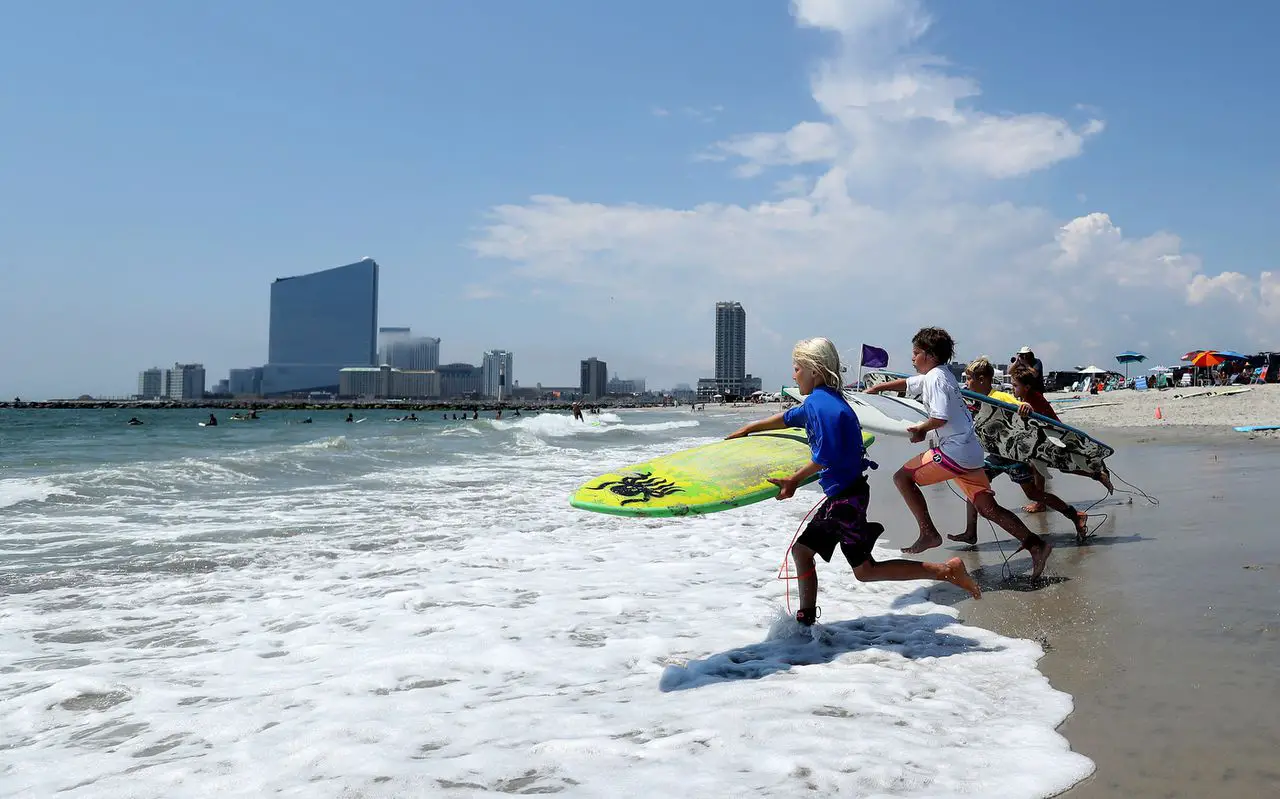










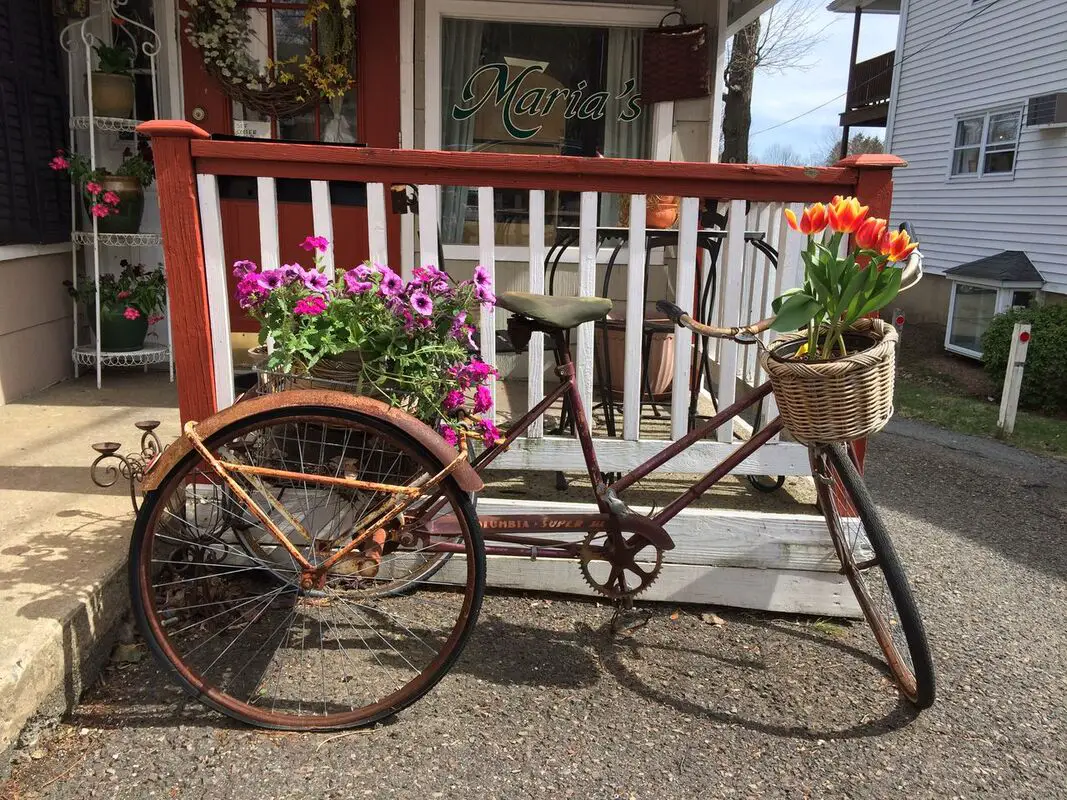

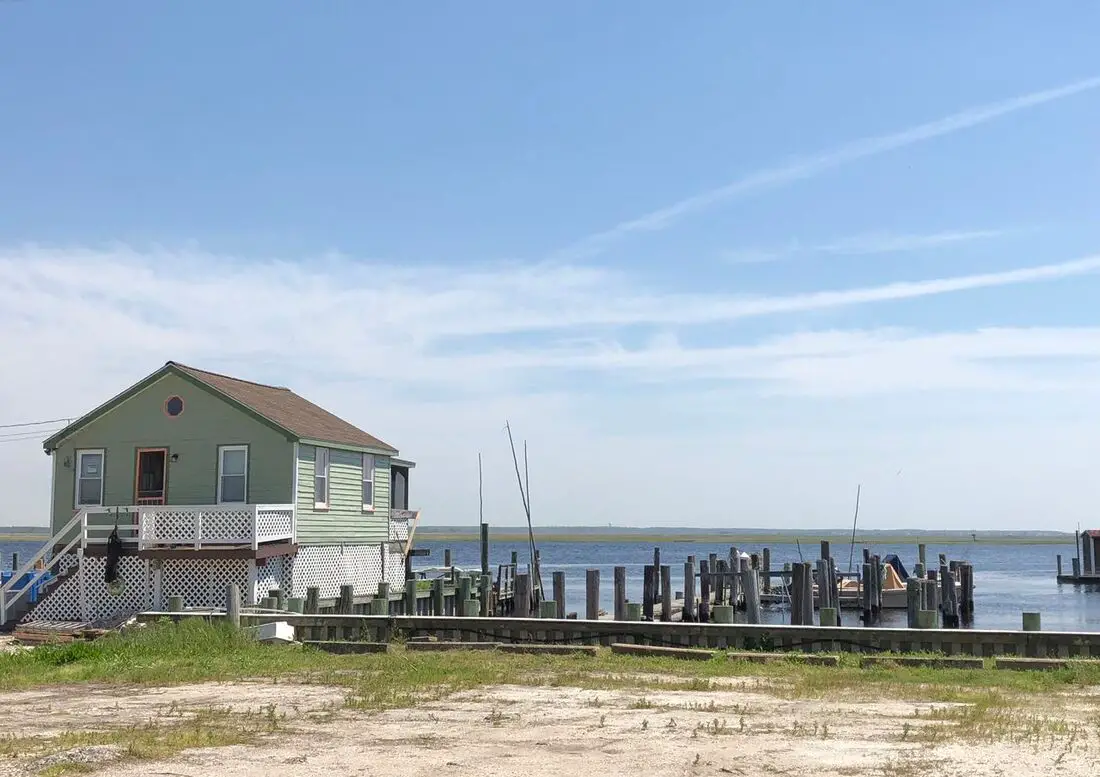





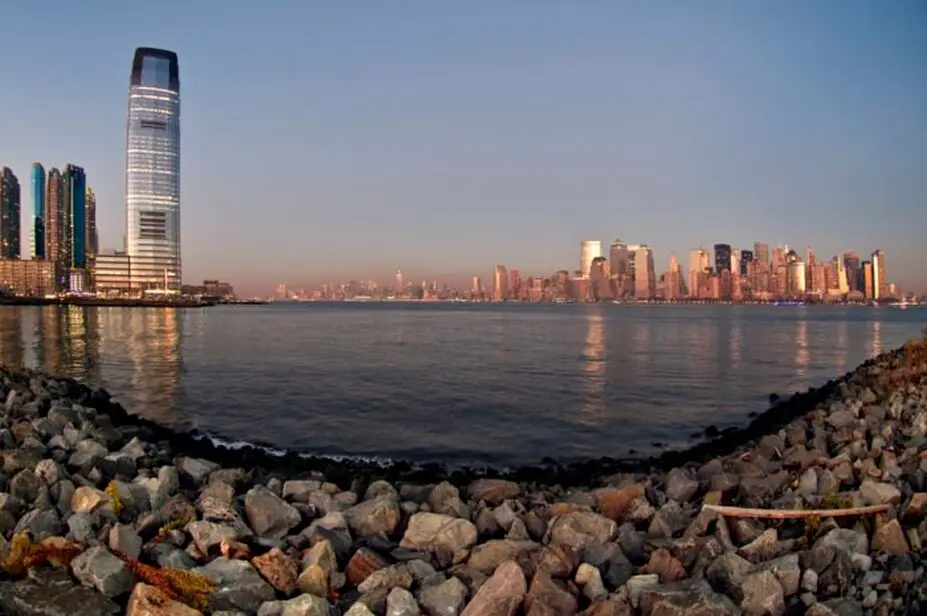
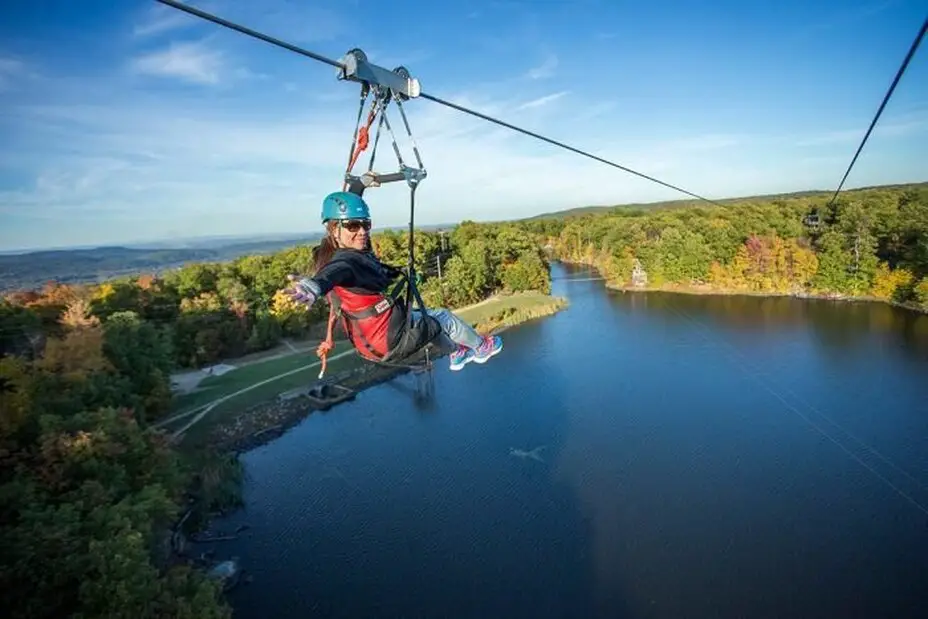








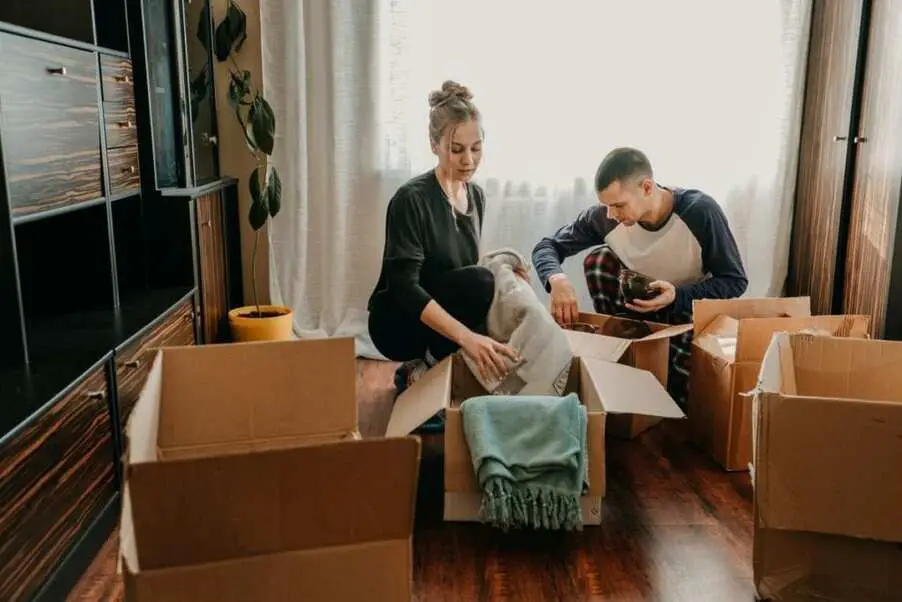













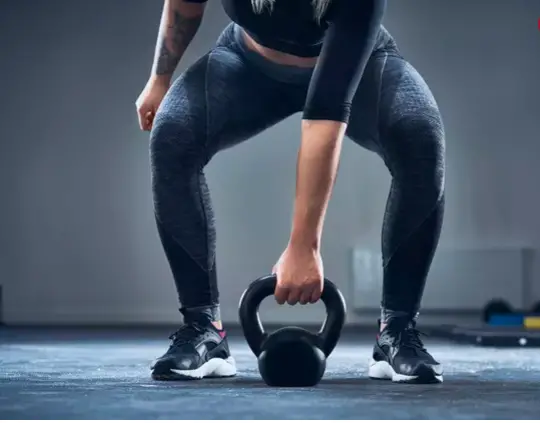





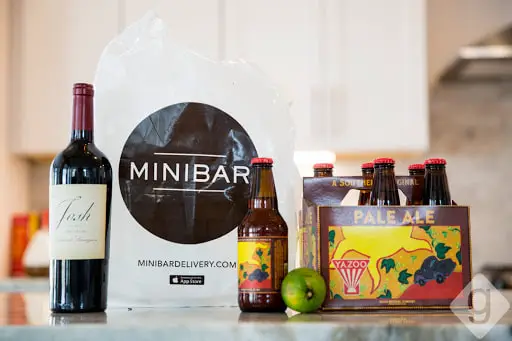










 RSS Feed
RSS Feed






